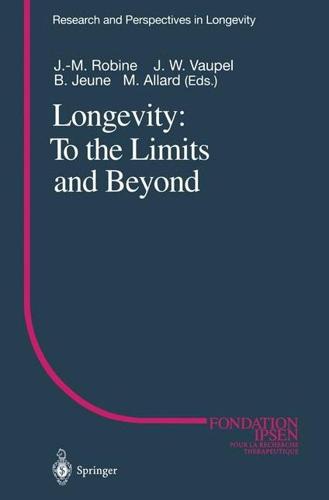
Longevity: To the Limits and Beyond (Research and Perspectives in Longevity)
by
Jean-Marie Robine
,
James W. Vaupel
,
Bernard Jeune
and
Michel Allard
Published 2 Jan 1997
Proc Natl Acad Sci USA 92:7540-7544 Luckinbill LS, Clare MJ (1985) Selection for life span in Drosophila melanogaster. Heredity 58:9-18 Masoro EJ (1992) Retardation of aging processes by nutritional means. Ann NY Acad Sci 673:29-35 Medawar PB (1952) An unsolved problem of biology. London, H K Lewis. Orr WC, Sohal RS (1994) Extension of life-span by overexpression of superoxide dismutase and catalase in Drosophila melanogaster. Science 263:1128-1130 Partridge L, Barton NH (1993) Optimality, mutation and the evolution of ageing. Nature 362:305-311 Rose MR (1984) Laboratory evolution of postponed senescence in Drosophila melanogaster. Evolution 38:1004-1010 Schachter F, Cohen D, Kirkwood TBL (1993) Prospects for the genetics of human longevity.
…
Ageing Dev. 29:63-69 Orr WC, Sohal RS (1992) The effects of catalase gene overexpression on life span and resistance to oxidative stress in transgenic Drosophila melanogaster. Arch. Biochem. Biophys. 297:35-41 Orr WC, Sohal RS (1993) The effects of Cu-Zn superoxide dismutase gene overexpression on life span and resistance to oxidative stress in transgenic Drosophila melanogaster. Arch. Biochem. Biophys. 301 :34-40 Oxidative Stress May Be a Causal Factor in Senescence of Animals 153 Orr WC, Sohal RS (1994) Extension of life-span by overexpression of superoxide dismutase and catalase in Drosophila melanogaster. Science 263:1128-1130 Pearl R (1928) The rate of living. Alfred A.
…
Human Genet 91:519-526 Service PM (1987) Physiological mechanisms of increased stress resistance in Drosophila melanogaster selected for postponed senescence. Physiol Zool 60:321- 326 Smith DWE (1994) The tails of survival curves. BioEssays 16:907-911 Weindruch R, Walford RL (1988) The retardation of aging and disease by dietary restriction. Charles Thomas, Springfield Williams GC (1957) Pleiotropy, natural selection and the evolution of senescence. Evolution 11:398-411 Zwaan BJ, Bijlsma R, Hoekstra RF (1995) Direct selection on lifespan in Drosophila melanogaster. Evolution 49:649-659 Emergence of Centenarians and Super-centenarians B.
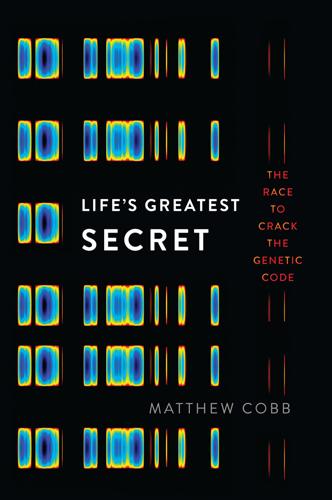
Life's Greatest Secret: The Race to Crack the Genetic Code
by
Matthew Cobb
Published 6 Jul 2015
There was a potential link between these two approaches. As the Drosophila geneticist Jack Schultz put it in 1935, by studying the effects of genes it should be possible ‘to find out something about the nature of the gene’.34 One of the scientists who took Schultz’s suggestion very seriously was George Beadle, who had studied the genetics of eye colour in Drosophila in Morgan’s laboratory, alongside the Franco-Russian geneticist Boris Ephrussi. When Ephrussi returned to Paris, Beadle followed him to continue their work. Their objective was to establish the biochemical basis of the mutations that changed the eye-colour of Drosophila flies. Beadle and Ephrussi’s experiments failed: the biochemistry of their system was too complicated, and they were unable to extract the relevant chemicals from the fly’s tiny eyes.
…
The first animal genome to be completed, in 1998, was that of the nematode worm, Caenorhabditis elegans, closely followed by that of the tiny vinegar fly, Drosophila melanogaster, in 2000. These projects provided vital information about two widely used laboratory organisms and were testing-grounds for different technical and commercial approaches to genome sequencing. The C. elegans genome project, led by John Sulston, was entirely funded by public money, whereas the Drosophila genome was a joint effort between publicly funded researchers and a company called Celera Genomics, led by Craig Venter, a molecular biologist turned entrepreneur. Despite the very different motivations of the public and private researchers, the Drosophila genome project was a success.
…
To resolve this problem, Venter and his Celera colleagues enlisted computer scientists to develop algorithms for assembling the sequence, and they were able to prove the validity of their approach with the Drosophila genome. Despite hostility from many scientists around the world, Venter was probably right to argue that this method would make it possible to complete the project. Nevertheless, problems remained – even with the cleverest algorithms in the world, it is not possible to join up all of the bits of sequences. To get over this problem, recalcitrant parts of the genome were amplified in bacteria to try and bridge the gap. This does not always work – some sections of the human and the Drosophila genomes have still not been joined up, fifteen years after the sequences were published.
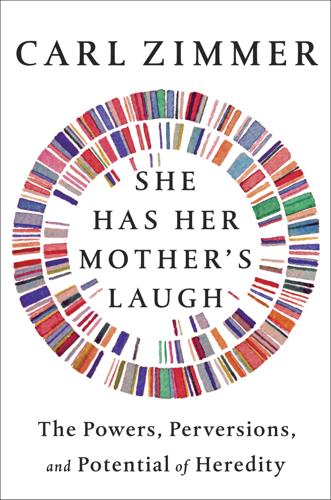
She Has Her Mother's Laugh
by
Carl Zimmer
Published 29 May 2018
A Russian biologist named Sergey Gershenson went into a forest to trap a species of fly called Drosophila obscura. When he brought the flies back to the Institute of Experimental Biology in Moscow, he figured out how to keep them alive on a diet of fermented raisins, potatoes, and water. Some of the female flies he trapped were carrying fertilized eggs, which they then laid by the thousands. Gershenson picked some of their offspring to breed new lines he could study for inherited traits. There was something peculiar about two of the lines, Gershenson noticed. Typically, a batch of eggs produced by Drosophila obscura contains an even balance of males and females.
…
In 1928, Morgan headed west to the California Institute of Technology, and Dobzhansky went with him to the orange-scented hills of Pasadena. Once Dobzhansky had settled into his new Western home, he drew up a plan to study how genetic variations were spread out over the range of a wild species. He knew he couldn’t study Morgan’s favorite, Drosophila melanogaster. It was a garbage-feeding camp follower. Instead, Dobzhansky picked Drosophila pseuodoobscura, a truly wild animal that lived across a range stretching from Guatemala to British Columbia. Dobzhansky bought a Model A Ford and started driving into remote mountain ranges to catch flies from isolated populations. Back in Pasadena, he bred the flies and inspected their chromosomes under a microscope.
…
CHAPTER 19 The Planet’s Heirs WHEN VALENTINO GANTZ first heard about CRISPR, it sounded like a godsend. At the time, he was getting his PhD at the University of California, San Diego, studying genes in Drosophila and related flies. He tinkered with their genes and observed whether he could change how their embryos developed. But the best tools he could use were clumsy and crude. In 2013, Gantz heard that researchers had figured out how to use CRISPR to alter a gene in Drosophila with easy precision. “It was one of the things I was waiting for,” Gantz told me when I visited him at his laboratory on a eucalyptus-covered hillside by the Pacific.
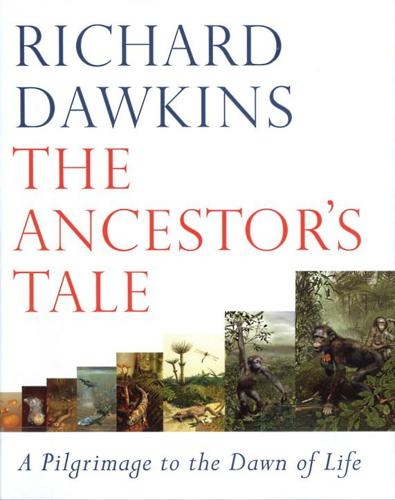
The Ancestor's Tale: A Pilgrimage to the Dawn of Evolution
by
Richard Dawkins
Published 1 Jan 2004
Blood vessels, nerves, muscle blocks, cartilage discs and ribs, where present, all follow the repetitive, modular plan. As with Drosophila the modules, though following the same general plan as each other, are different in detail. And like the insect division into head, thorax and abdomen, vertebrae are grouped into cervical (neck), thoracic (upper back vertebrae with ribs), lumbar (lower back vertebrae without ribs) and caudal (tail). As in Drosophila, the cells, whether they are bone cells, muscle cells, cartilage cells or anything else, need to know which segment they are in. And as in Drosophila, they know because of Hox genes -- Hox genes that recognisably correspond to particular Drosophila Hox genes -- although, unsurprisingly, given the immensity of time since Concestor 26, they are far from identical.
…
When two, three or four versions of a Hox gene impinge upon one segment, their effects are combined. And, as with Drosophila, all mouse Hox genes exert their strongest effect in the first (most anterior) segment in their domain of influence, with a gradient of decreasing expression downstream in more posterior segments. It gets better. With minor exceptions, each gene from the Drosophila array of eight Hox genes resembles its opposite number in the mouse series more than it resembles the other seven genes in the Drosophila series. And they are in the same order along their respective chromosomes. Every one of the eight Drosophila genes has at least one representative in the mouse series of 13.
…
A particularly notable member of this family is Pax6, which corresponds to the gene known as ey in Drosophila. I've already mentioned that Pax6 is responsible for telling cells to make eyes. The same gene makes eyes in animals as different as Drosophila and mouse, even though the eyes produced are radically different in the two animals. In a similar way to Hox genes, Pax6 doesn't tell cells how to make an eye. It only tells them that here is the place to make an eye. A rather parallel example is the small family of genes called tinman. Again tinman genes are present in both Drosophila and mice. In Drosophila, tinman genes are responsible for telling cells to make a heart, and they normally express themselves in just the right place to make a Drosophila heart.

These Strange New Minds: How AI Learned to Talk and What It Means
by
Christopher Summerfield
Published 11 Mar 2025
If you have ever ignored a bowl of fruit for a few days in summer, you may have noticed a swarm of tiny flies looping insistently above your blackening bananas. These are Drosophila melanogaster, an insect species that is much more popular in neuroscience laboratories than in the average kitchen. In the first few hours after hatching, Drosophila go through a rapid series of larval stages, during which they look a bit like a squashed white gummy bear. In 2015, neuroscientists chopped the brain of one unwitting six-hour-old larval Drosophila into thousands of wafer-thin slices, each of less than 4 nanometres (for comparison, an average human hair has a diameter of about 100,000 nanometres).
…
Neuroscientists have known roughly how the brains of flies, mice, monkeys and humans are organized for decades, but this experiment with Drosophila was special. By studying the slices with an electron microscope – and after a lot of painstaking labour – a team of researchers was able to reconstruct each of the 548,000 connections made between the 3,016 neurons in its tiny larval brain.[*3] For the first time, neuroscientists had been able to build a full reconstruction (or ‘connectome’) of the brain of an insect. Many behaviours that Drosophila exhibits are innately stamped into this network and thus utterly inflexible. For instance, in the wild Drosophila are exposed to various potential threats, such as being stung by parasitic wasps that inject them with eggs (which, once hatched, devour their hapless host from within).
…
As such, it suffers from the same shortcoming as other symbolic models – it is too brittle to deal with the messy reality of the real world. So how does Drosophila manage? The answer is that the strength of connections in the fruit-fly brain can adapt. In fact, like almost every other animal on Earth, Drosophila is able to learn – to adjust its behaviour with experience. This has been known since at least the 1970s, with early studies in which Drosophila were given the choice of flying down a blue or a yellow tunnel, and received an electric shock if they made the wrong choice (they rapidly learned to choose the unshocked route).[*4] Fruit flies can be trained to prefer different odours (such as ethanol or banana oil), to avoid different zones in their training chamber because they are often unpleasantly hot, or to veer in one direction or another in response to images of differently coloured shapes (measured using a tiny flight simulator).

Climbing Mount Improbable
by
Richard Dawkins
and
Lalla Ward
Published 1 Jan 1996
Figure 7.15 Homeotic mutations: (a) four-winged Drosophila. In normal Drosophila the second pair of wings is replaced by halteres, as in Figure 7.11; (b) normal (upper) and mutant (lower) silkworm caterpillars. Normally there are proper insect legs only on the three thoracic segments. The mutant has nine ‘thoracic’ segments. Figure 7.15 shows examples of so-called homeotic mutations in the fruitfly Drosophila and in the silkworm caterpillar. The normal Drosophila, like all flies, has only a single pair of wings. The second pair of wings is replaced by halteres as explained above. The picture shows a mutant Drosophila in which not only is there a second pair of wings instead of halteres, the entire second thoracic segment is reduplicated in substitution for the third thoracic segment.
…
Rebecca Quiring and Uwe Waldorf, working in the same Swiss laboratory, found that these particular mammal genes are almost identical, in their DNA sequences, to the ey gene in Drosophila. This means that the same, gene has come down from remote ancestors to modern animals as distant from each other as mammals and insects. Moreover, in both these major branches of the animal kingdom the gene seems to have a lot to do with eyes. Remarkable fact number three is almost too startling. Halder, Callaerts and Gehring succeeded in introducing the mouse gene into Drosophila embryos. Mirabile dictu, the mouse gene induced ectopic eyes in Drosophila. Figure 5.29 (bottom) shows a small compound eye induced on the leg of a fruitfly by the mouse equivalent of ey.
…
Now, it is a general fact that although all of an animal’s genes are present in all its cells, only a minority of those genes are actually turned on or ‘expressed’ in any given part of the body. This is why livers are different from kidneys, even though both contain the same complete set of genes. In the adult Drosophila, ey usually expresses itself only in the head, which is why the eyes develop there. George Halder, Patrick Callaerts and Walter Gehring discovered an experimental manipulation that led to ey’s being expressed in other parts of the body. By doctoring Drosophila larvae in cunning ways, they succeeded in making ey express itself in the antennae, the wings and the legs. Amazingly, the treated adult flies grew up with fully formed compound eyes on their wings, legs, antennae and elsewhere (Figure 5.29).
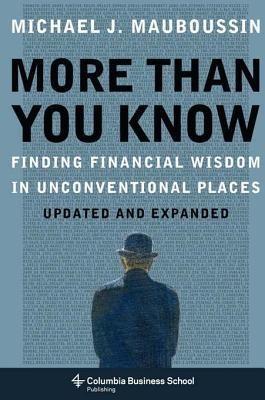
More Than You Know: Finding Financial Wisdom in Unconventional Places (Updated and Expanded)
by
Michael J. Mauboussin
Published 1 Jan 2006
—Bill Gates, Fortune, 1998 Fruit Flies and Futility Geneticists and biologists love to work with Drosophila melanogaster, a common fruit fly, and have made it a staple of biological study. Indeed, insights from Drosophila research helped a trio of scientists win the 1995 Nobel prize in medicine. Thousands of researchers continue to study the Drosophila to better understand various genetic and developmental issues. Drosophila is attractive to scientists because they understand its features and it is easy to handle. But the fly has another essential feature that scientists covet: its life cycle. Drosophila go from embryo to death in about two weeks.
…
Drosophila go from embryo to death in about two weeks. This rapid rate of reproduction allows scientists to study hundreds of generations of the fly’s development and mutations in a relatively short time. Drosophila’s fast evolution provides scientists with important clues about evolution in other species, which generally evolve at a relatively glacial pace.1 Why should businesspeople care about Drosophila? A sound body of evidence now suggests that the average speed of evolution is accelerating in the business world. Just as scientists have learned a great deal about evolutionary change from fruit flies, investors can benefit from understanding the sources and implications of accelerated business evolution.
…
Finally, the rate of change in the business world demands that investors spend more time understanding the dynamics of organizational change. Success and failure at fast-changing companies may provide investors with some useful mental models for appreciating change at the slower evolving companies. The business world is going the way of Drosophila. 22 All the Right Moves How to Balance the Long Term with the Short Term Strategy in complex systems must resemble strategy in board games. You develop a small and useful tree of options that is continuously revised based on the arrangement of pieces and the actions of your opponent. It is critical to keep the number of options open.
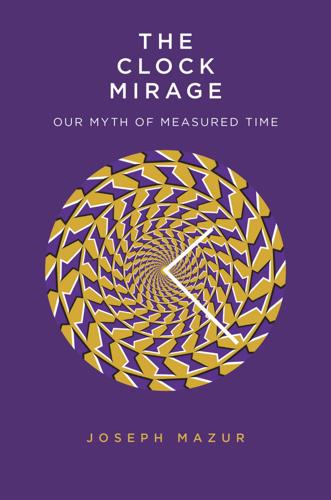
The Clock Mirage: Our Myth of Measured Time
by
Joseph Mazur
Published 20 Apr 2020
In effect, it is the fruit fly’s molecular clock hand encapsulated in a single cell; moreover, it has since been discovered that the biological clock in most mammals works by the same feedback loop, though in mammals it takes a whole group of per genes for the process to continue. It could be that this Drosophila melanogaster per gene model is the result of organic evolutionary adaptation of the earth’s circadian environment to maximize survival and well-being on a planet where life existence is governed by the alternation of light and darkness. Molecular instructions of clock genes and proteins during Drosophila circadian rhythms: (a) late evening, (b) nighttime, (c) morning, (d) daytime Here is how the circadian oscillator of Drosophila melanogaster works. The per gene in the nucleus of the cell transcribes mRNA molecules that migrate to the cytoplasm to give information and a green light for ribosomes (the protein workshop) to build both stable and unstable protein molecules.
…
Perhaps that is why fruit flies hatch in highest numbers at dawn.14 And also perhaps, this is why human sleep patterns tend to conform to ordered sleep times and why any disruption of the order creates confusion in subsequent sleep periods.15 Many living organisms, from snow fleas to Mimosa pudica, have evolved internal clock mechanisms that synchronize behavior, metabolism, and physiology with circadian rhythms. Humans, too, have specific cells that work as clock mechanisms tuned to circadian rhythms, but their oscillators are far more complex.16 Here is what is known. First, the Drosophila model is now acknowledged to parallel molecular mechanisms in humans, and since Drosophila and humans have functional homologues of most parts of human disease genes, the Drosophila model is enormously effective for research into human diseases and drug discovery. It tells how the cell is attached to the night-day cycle of sleep, melatonin and endocrine activity, cardiovascular changes, body temperatures, blood pressures, immune differences, and renal functions.
…
Early fruit fly molecular research at Cal Tech is documented in Ronald Konopka’s and Seymour Benzer’s landmark 1971 publication, which reports success in generating mutant genes that became arrhythmic.11 Leading chronologists claim that the work of Konopka and Benzer had an influence on the field of chronobiology that cannot be overstated, and their conclusions “were prescient for the entire circadian field and all of its subsequent molecular sophistication.”12 The simpler story, told here, is sure to be considered raw to the biochemists and entomologists that call the fruit fly a Drosophila melanogaster, though I expect it is the best that can be done within these few pages. So, without getting into the full description of the differences between protein functions of humans and flies, we can interpret the Drosophila model of the circadian clock as simply a feedback loop that operates by a specific gene expression with a relatively short half-life. In essence and in generality, the loop simply behaves like this: the quantity of A molecules increases, reaching a threshold that creates B molecules (with a relatively short half-life), which in turn shut down production of the A molecules.
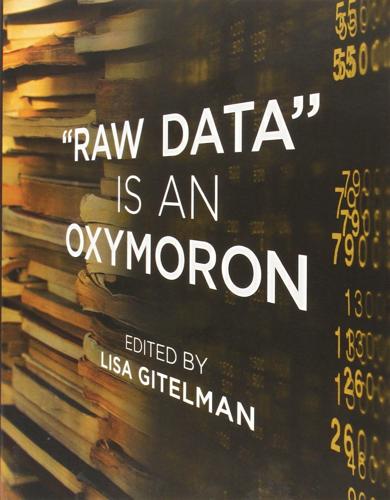
Raw Data Is an Oxymoron
by
Lisa Gitelman
Published 25 Jan 2013
Only months later Morgan declared himself, none too happily, to be “head Data Bite Man over ears in my flies.”8 The problem was not only the reproductive rate of fruit flies, but also their propensity to mutate in response to environmental change—the precise feature that made Drosophila so valuable to the geneticist interested in hereditary features and mutations across generations. Mendel’s peas had been docile and well behaved by comparison: they were smooth or shriveled, and followed comparatively clear patterns of generational inheritance—a far cry from the seemingly endless variety of eye colors, wing shapes, and body sizes that emerged in the Drosophila “breeder reactor.” In the face of this nineteenth-century data deluge, geneticists “had no choice but to adopt a fundamentally new system of naming and classifying factors.”9 In the lab, Drosophila became a new creature, one that could not exist outside that institution.
…
Scientists first began to use the fruit fly for genetic research in 1901 at Harvard and since then it has become a dominant species in this new ecosystem: the lab. While capable of sleepily surviving the outdoor winter, Drosophila took to the warmth and security of labs with perennial reproduction. Defining an entirely new criterion of fitness, its productivity in this new ecological niche pushed down the traditional species inhabiting the genetic lab: the rat and mouse, the pea and primrose. One of the foremost early Drosophila scientists, Thomas Morgan, writing of the relentless reproductive productivity of Melanogaster, enthused: “It is wonderful material. They breed all the year round and give a new generation every sixteen days.”
…
To do this, we must domesticate data: establishing rituals and routines of collection, creating safe pathways for samples to travel, and setting metadata standards to render them comprehensible by others. And in doing so, data increasingly domesticate us. Flies Dissatisfied with Information System As historian of science Robert Kohler describes, the fruit fly Drosophila (and its most common lab species, D. Melanogaster) was not born as a laboratory animal per se.7 Already “cosmopolitan,” it has cohabited with us in cities for millennia; it is the fruit fly most likely to appear if you were to put a banana out on your window sill and then wait for the larvae to mature.

How Not to Network a Nation: The Uneasy History of the Soviet Internet (Information Policy)
by
Benjamin Peters
Published 2 Jun 2016
Bruce Abramson, Digital Phoenix: Why the Information Economy Collapsed and How It Will Rise Again (Cambridge: MIT Press), 89–90. 42. Johnson, White King and Red Queen, chap. 6. 43. Nathan Engsmenger, “Is Chess the Drosophila of Artificial Intelligence?,” Social Studies of Science 42 (1) (2011): 5–30. See also John McCarthy, “Chess as the Drosophila of AI,” accessed April 15, 2015, http://jmc.stanford.edu/articles/drosophila/drosophila.pdf. 44. E. M. Landis and I. M. Yaglom, “About Aleksandr Semenovich Kronrod,” Uspekhi Matematicheskikh Nauk 56 (5) (2001): 191–201, accessed April 15, 2015, http://www.mathnet.ru/links/1e483992e9f2c42fda4390d0116737a3/rm448.pdf. 45.
…
Maturana, Humberto, and Francisco Valera, Autopoiesis and Cognition: The Realization of the Living. Boston: Reidel, 1980. Mayr, Otto. Authority, Liberty, and Automatic Machinery in Early Modern Europe. Baltimore: Johns Hopkins University Press, 1989. McCarthy, John. “Chess as the Drosophila of AI.” Accessed April 15, 2015, http://jmc.stanford.edu/articles/drosophila/drosophila.pdf. McCulloch, Warren S. “A Heterarchy of Values Determined by the Topology of Nervous Nets.” Bulletin of Mathematical Biophysics 7 (1945): 89–93. McCulloch, Warren S., and Walter Pitts. “A Logical Calculus of Ideas Immanent in Nervous Activity,” Bulletin of Mathematical Biophysics 5 (1943):115–133.
…
In the early 1990s, shaken by the collapse of the Soviet Union and years from death, Botvinnik reached out one last time with strategic advice for Yeltsin’s government but to no avail.42 There is a truism in the history of science that science serves many specific social purposes but basic research need not begin with any single goal in mind. Biologists, for example, run test on fruit flies—or Drosophila—not because they are particularly devoted to improving the life of fruit flies; they do so because fruit flies are convenient test subjects that reproduce quickly and cheaply. Computer chess has been called “the drosophila of artificial intelligence” (Alexander Kronrod’s phrase, popularized by American computer scientist John McCarthy) because it is thought to stand in as an affordable test case for larger strategic programming projects, which include both artificial intelligence as well as planning the Soviet command economy.43 Kronrod, himself a distinguished Soviet mathematician and computer scientist, also collaborated with Kantorovich on the computer planning of the economy and with Botvinnik on the algorithm that defeated the Kotok-McCarthy American chess program in 1966 and 1967.44 The unexpected joy of computer programming lay in finding new applications for old techniques, which in many ways was the same allure that fascinated general-purpose computer programmers since Turing.
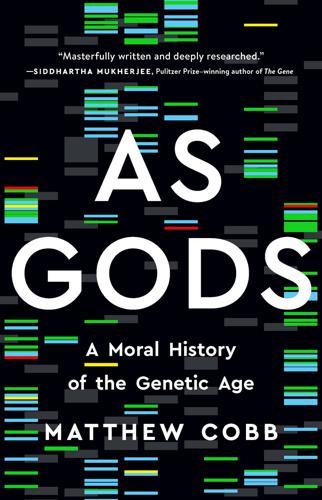
As Gods: A Moral History of the Genetic Age
by
Matthew Cobb
Published 15 Nov 2022
My personal favourite piece of research from this period was the appearance in Cell – a hugely influential journal devoted to the hottest discoveries in cell biology – of the use of CRISPR on two species of ants (this was the only research article Cell has ever published on ants).51 Using CRISPR to knock out the ants’ olfactory receptors, the researchers revealed the unsuspected role of olfactory neurons in shaping the structure of the ant brain. Previously, studies in Drosophila had persuaded scientists that the olfactory parts of the insect brain were largely hard-wired because knocking out the fly’s olfactory receptors had no effect on brain structure; the scrambled brains of the CRISPRed ants revealed that what is true in Drosophila is not necessarily true of all insects. There will be many similar instances in the future – by allowing scientists to investigate all sorts of organisms with interesting ecologies, rather than the usual laboratory suspects of bacteria, worms, flies, zebrafish and mice, CRISPR will lead to surprising new discoveries.
…
In the laboratory it is possible to acquire the kind of conditional control that might have made the transgenic wheat successful, by linking together different transgenic components and creating an organism in which only certain cells will perform a desired function under particular conditions. For example, in the fly Drosophila, which I have studied for over forty years, in the 1990s Andrea Brand and Norbert Perrimon developed a modular expression system involving two transgenes from yeast, Gal4 and UAS (upstream activation sequence); the Gal4 protein is a transcription factor – it acts like a switch on the UAS sequence, activating it.7 Researchers introduced Gal4 into the Drosophila genome repeatedly, and on some occasions the transgene randomly inserted itself into the promoter region of a gene that was expressed only in certain cells, or in one sex, or at certain times.
…
It seems more likely that the growing personal and scientific tensions between Cohen and Berg played a role in that initial exclusion. But given the transformational impact of the Cohen–Boyer method for cloning recombinant DNA, the cloners – Stanley Cohen and Herb Boyer, along with Ron Davis and David Hogness, who had recently fused DNA from the geneticists’ friend, the Drosophila fly, with Cohen’s plasmid – were also invited to sign the document. The Berg letter was published with the imprimatur of the National Academy of Sciences, reinforcing its impact – it not only had the backing of the leading researchers in the field, it also had the support of the US scientific establishment.
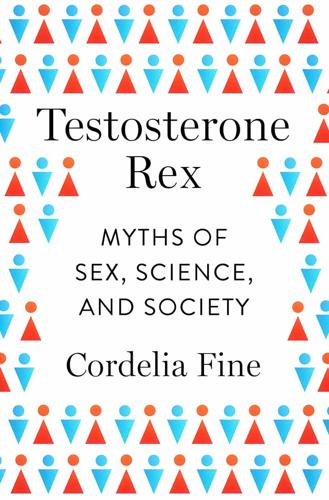
Testosterone Rex: Myths of Sex, Science, and Society
by
Cordelia Fine
Published 13 Jan 2017
If, as Darwin suggested, sexual selection acts more strongly on males, then this implies greater variation in the reproductive success of males than in females—that is, a wider range between the least, and the most, reproductively successful individuals. Bateman put this assumption to the test for the very first time.4 To do this, he ran six series of experiments in which male and female fruit flies (Drosophila melanogaster) were trapped together in glass containers for three to four days. At the end of this period, Bateman worked out as best he could how many offspring each male and female had produced, and from how many different mates. He needed considerable ingenuity to do this, since the discipline of molecular biology, that today brings paternity-testing kits to supermarket shelves, did not exist in the 1940s.
…
Of course, evolutionary biologists interested in sexual selection weren’t idly lolling around for decades on the grounds that good old Bateman had discovered everything they needed to know back in 1948. They were busy doing experiments, and contemporary research has identified many species to which Bateman’s principles do appear to apply.17 However, Drosophila melanogaster turn out to be just the beginning of a more complicated empirical story. By 2012, a lengthy table in an academic behavioral ecology journal listed thirty-nine species, from across the animal kingdom, in which research had established that female promiscuity brings about greater reproductive success.18 And while in many of these species this link is nonetheless stronger for males, sometimes it’s equal (for instance, in the yellow-pine chipmunk and the wild eastern salamander).19 This helps to explain why, contrary to the historical understanding that promiscuity is generally the preserve of males, it’s now clear that female promiscuity is abundant across the animal kingdom—from fruitflies20 to humpback whales21—and is “widespread” among primates.22 This revelation owes a large debt to the DNA paternity-testing techniques that have enabled researchers to part the veils of discretion that previously obscured rampant female promiscuity (most particularly in many supposedly monogamous female birds).23 Consider the lek: a mating arrangement in which males compete with each other in a specific territory or arena in a winner-takes-all conflict for sexual access to females.
…
Despite apparently having nothing more demanding to do all day than resemble a stick, they only rouse themselves to take up this mating opportunity 30–40 percent of the time.47 Male mealworm beetles, Mormon crickets, and European starlings are similarly indifferent to female charms on a regular basis.48 Indeed, it turns out that even male Drosophila, the original poster boys for the benefits of a philandering lifestyle, sometimes refuse the advances of willing females, presumably on the grounds that they’re saving their sperm for the right partner.49 Given all the complications of the original Bateman story, it’s unsurprising that there turns out to be no straightforward relation between parental investment and parental care either.

Endless Forms Most Beautiful: The New Science of Evo Devo
by
Sean B. Carroll
Published 10 Apr 2005
In 1915, geneticist Calvin Bridges obtained the first true breeding homeotic mutant in the fruit fly Drosophila melanogaster , which was then just beginning to become a leading species for genetic investigations. Bridges isolated a spontaneous mutation that caused the tiny hindwings of the fruit fly to resemble the large forewings. He dubbed this mutant bithorax . Subsequently, several more homeotic mutants were identified in Drosophila . For example, a rather spectacular mutant Antennapedia causes the development of legs in place of the antennae on the head (figure 2.9).
…
It is not that development is stunted or fails, but that the fate of an entire structure is altered, such that a part is put in the wrong place or the wrong number of parts form. Crucially, the transformation is of one serial homolog into the likeness of another (antenna to leg, hindwing to forewing). They are also so intriguing because each transformation is due to a mutation at a single gene. In Drosophila , only a small number of “homeotic” genes give homeotic forms when they are mutated, indicating that a small number of “master” genes govern the differentiation of serially homologous body parts in the fly. F IG . 2.9 Homeotic mutant fruit fly.
…
More is known, however, in insects about how complex patterns of black spots and stripes are made, and this has been a particular interest in my laboratory. The bodies and parts of the many species of fruit flies, for example, display a great variety of black patterns. The black pigment in these bugs is also melanin. In Drosophila melanogaster the abdomen and thorax are patterned, the bristles on the body are very dark, but the wings are generally clear and pale. In other species, large amounts of black pigment may be distributed throughout the body, or restricted to specific places. In one species, D. biarmipes , the wings of male flies bear a conspicuous black spot toward their tips (figure 9.9).
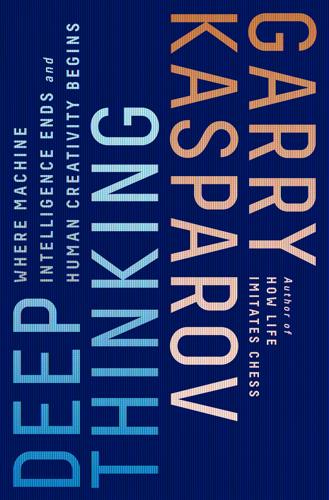
Deep Thinking: Where Machine Intelligence Ends and Human Creativity Begins
by
Garry Kasparov
Published 1 May 2017
John McCarthy, the American computer scientist who coined the term “artificial intelligence” in 1956, called chess the “Drosophila of AI,” referring to how the humble fruit fly was the ideal subject for countless seminal scientific experiments in biology, especially genetics. By the end of the 1980s, the computer chess community had largely resigned this great experiment. In 1990, Ken Thompson of Belle was openly recommending the game Go as a more promising target for real advances in machine cognition. In the same year, the compendium Computers, Chess, and Cognition included an entire section on Go, titled “A New Drosophila for AI?” The nineteen-by-nineteen Go board with its 361 black and white stones is too big of a matrix to crack by brute force, too subtle to be decided by the tactical blunders that define human losses to computers at chess.
…
Our increasingly powerful machines give us the security to be more ambitious and better prepared, but we still have to make the choice to do it. Technology has lowered the barrier to entry in dozens of business sectors, which should prompt more experimentation and investment. Powerful models allow us to simulate the impact of change better than ever, lowering risk. Once again using chess machines as our favorite Drosophila fruit-fly test subject and metaphor, Grandmasters have used the ability to prepare with engines and databases to play riskier, more experimental opening variations. Many members of the chess community were afraid that super-strong machines would damage professional chess irreparably by reducing Grandmasters to the role of puppets doing little more than relaying the moves their engines told them were the best.
…
The young stars the Kasparov Chess Foundation brings together also represent California, Wisconsin, Utah, Florida, Alabama, and Texas. For the last two decades, especially with the proliferation of the Internet and cell phones, a dominant topic has been how technology will enable people from all over the world to become entrepreneurs, or scientists, or anything they want despite where they live. Here, again, our little chess Drosophila has already shown the way. The talent is out there; people only need the tools to express it. Chess sneaks through the cracks of cultural, geographic, technological, and economic barriers, disguised as an innocuous pastime. Again and again, it serves as a model for everything from artificial intelligence to online gaming to problem solving and gamification in education.
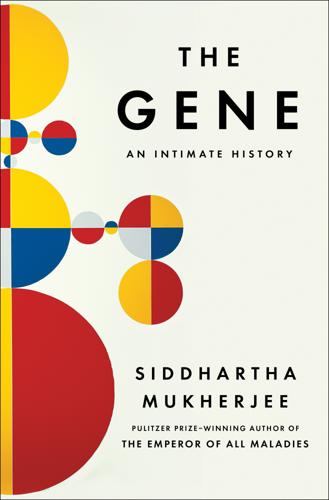
The Gene: An Intimate History
by
Siddhartha Mukherjee
Published 16 May 2016
Kohler, Lords of the Fly: Drosophila Genetics and the Experimental Life (Chicago: University of Chicago Press, 1994), “From Laboratory to Field: Evolutionary Genetics.” In September 1943, Dobzhansky: Th. Dobzhansky, “Genetics of natural populations IX. Temporal changes in the composition of populations of Drosophila pseudoobscura,” Genetics 28, no. 2 (1943): 162. Dobzhansky could demonstrate it experimentally: Details of Dobzhansky’s experiments are sourced from Theodosius Dobzhansky, “Genetics of natural populations XIV. A response of certain gene arrangements in the third chromosome of Drosophila pseudoobscura to natural selection,” Genetics 32, no. 2 (1947): 142; and S.
…
it had sequenced the genome of the fruit fly: Declan Butler, “Venter’s Drosophila ‘success’ set to boost human genome efforts,” Nature 401, no. 6755 (1999): 729–30. In March 2000, Science published: “The Drosophila genome,” Science 287, no. 5461 (2000): 2105–364. Of the 289 human genes known to be: David N. Cooper, Human Gene Evolution (Oxford: BIOS Scientific Publishers, 1999), 21. 177 genes: William K. Purves, Life: The Science of Biology (Sunderland, MA: Sinauer Associates, 2001), 262. “a man like me”: Marsh, William Blake, 56. “The lesson is that the complexity”: Quote from the director of the Berkeley Drosophila Genome Project, Gerry Rubin, in Robert Sanders, “UC Berkeley collaboration with Celera Genomics concludes with publication of nearly complete sequence of the genome of the fruit fly,” press release, UC Berkeley, March 24, 2000, http://www.berkeley.edu/news/media/releases/2000/03/03-24-2000.html.
…
The tightness of genetic linkage, in short, was a surrogate for the physical proximity of genes on chromosomes: by measuring how often two features—blond-hairedness and blue-eyedness—were linked or unlinked, you could measure the distance between their genes on the chromosome. On a winter evening in 1911, Sturtevant, then a twenty-year-old undergraduate student in Morgan’s lab, brought the available experimental data on the linkage of Drosophila (fruit fly) genes to his room and—neglecting his mathematics homework—spent the night constructing the first map of genes in flies. If A was tightly linked to B, and very loosely linked to C, Sturtevant reasoned, then the three genes must be positioned on the chromosome in that order and with proportional distance from each other: A .
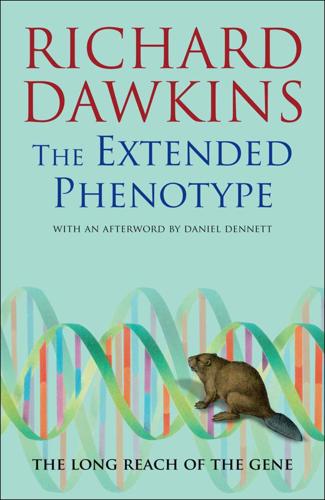
The Extended Phenotype: The Long Reach of the Gene
by
Richard Dawkins
Published 1 Jan 1982
But this is a routine genetic practice, and one which close examination shows to be almost inevitable. Other than at the molecular level, where one gene is seen directly to produce one protein chain, geneticists never deal with units of phenotype as such. Rather, they always deal with differences. When a geneticist speaks of a gene ‘for’ red eyes in Drosophila, he is not speaking of the cistron which acts as template for the synthesis of the red pigment molecule. He is implicitly saying: there is variation in eye colour in the population; other things being equal, a fly with this gene is more likely to have red eyes than a fly without the gene. That is all that we ever mean by a gene ‘for’ red eyes.
…
In a society with harem defence by dominant males, a male who is known to be homosexual is more likely to be tolerated by a dominant male than a known heterosexual male, and an otherwise subordinate male may be able, by virtue of this, to obtain clandestine copulations with females. But I raise the ‘sneaky male’ hypothesis not as a plausible possibility so much as a way of dramatizing how easy and inconclusive it is to dream up explanations of this kind (Lewontin, 1979b, used the same didactic trick in discussing apparent homosexuality in Drosophila). The main point I wish to make is quite different and much more important. It is again the point about how we characterize the phenotypic feature that we are trying to explain. Homosexuality is, of course, a problem for Darwinians only if there is a genetic component to the difference between homosexual and heterosexual individuals.
…
And yet some genes have managed to beat the system.’ Crow suggests that segregation distorters may be much more common than we ordinarily realize, for the methods of geneticists are not well geared to detecting them, especially if they produce only slight, quantitative effects. The SD genes in Drosophila are particularly well studied, and here there is some indication as to the actual mechanism of distortion. ‘While the homologous chromosomes are still paired up during meiosis, the SD chromosome might do something to its normal partner (and rival) that later causes a dysfunction of the sperm receiving the normal chromosome … SD might actually break the other chromosome’ (Crow 1979, my macabre emphasis).

The Biology of Belief: Unleashing the Power of Consciousness, Matter & Miracles
by
Bruce H. Lipton
Published 1 Jan 2005
Notice that proteins within one functional group, such as those concerned with sex determination (arrow), also influence proteins with a completely different function, like RNA synthesis (i.e., RNA helicase). Newtonian research scientists have not fully appreciated the extensive interconnectivity among the cell’s biological information networks. Map of interactions among a very small set of the cellular proteins (shaded and numbered circles) found in a Drosophila (fruit fly) cell. Most of the proteins are associated with the synthesis and metabolism of RNA molecules. Proteins enclosed within ovals are grouped according to specific pathway functions. Connecting lines indicate protein-protein interactions. Protein interconnections among the different pathways reveal how interfering with one Protein may produce profound “side effects” upon other related pathways.
…
“DNA METHYLATION: Tying It All Together: Epigenetics, Genetics, Cell Cycle, and Cancer.” Science 277(5334): 1948-1949. Blaxter, M. (2003). “Two worms are better than one.” Nature 426: 395-396. Bray, D. (2003). “Molecular Prodigality.” Science 299: 1189-1190. Celniker, S. E., D. A. Wheeler, et al. (2002). “Finishing a whole-genome shotgun: Release 3 of the Drosophila melanogaster euchromatic genome sequence.” Genome Biology 3(12): 0079.1-0079.14. Chakravarti, A. and P. Little (2003). “Nature, nurture and human disease.” Nature 421: 412-414. Darwin, F., Ed. (1888). Charles Darwin: Life and Letters. London, Murray. Dennis, C. (2003). “Altered states.” Nature 421: 686-688.
…
“Gene Counters Struggle to Get the Right Answer.” Science 301: 1040-1041. Pray, L. A. (2004). “Epigenetics: Genome, Meet Your Environment.” The Scientist 14-20. Reik, W. and J. Walter (2001). “Genomic Imprinting: Parental Influence on the Genome.” Nature Reviews Genetics 2: 21+. Schmucker, D., J. C. Clemens, et al. (2000). “Drosophila Dscam Is an Axon Guidance Receptor Exhibiting Extraordinary Molecular Diversity.” Cell 101: 671-684. Seppa, N. (2000). “Silencing the BRCA1 gene spells trouble.” Science News 157: 247. Silverman, P. H. (2004). “Rethinking Genetic Determinism: With only 30,000 genes, what is it that makes humans human?”
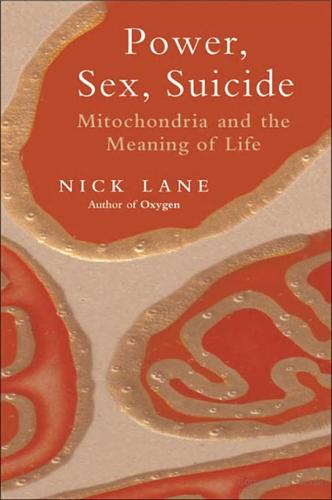
Power, Sex, Suicide: Mitochondria and the Meaning of Life
by
Nick Lane
Published 14 Oct 2005
Genetica 117: 3–16; 2003. Sabar, M., Gagliardi, D., Balk, J., and Leaver, C. J. ORFB is a subunit of F1F(O)-ATP synthase: Insight into the basis of cytoplasmic male sterility in sunflower. EMBO (European Molecular Biology Organization) Reports 4: 381–386; 2003. Drosophila giant sperm Pitnick, S., and Karr, T. L. Paternal products and by-products in Drosophila development. Proceedings of the Royal Society of London B: Biological Sciences 265: 821–826; 1998. Heteroplasmy in angiosperms Zhang, Q., Liu, Y., and Sodmergen. Examination of the cytoplasmic DNA in male reproductive cells to determine the potential for cytoplasmic inheritance in 295 angiosperm species.
…
I am reminded of Celtic music, in which the same tune goes by several names, and the same title refers to several different tunes: an endless stream of lovely variation, but scarcely conducive to a straightforward understanding. Just to give a genetic example, the gene ced-3 in nematode worms is known as nedd-2 in mice, dcp-1 in Drosophila, and ICE, or interleukin-1 betaconverting enzyme, in humans (as at the time it was known to be involved in the production of the immune messenger, interleukin 1-beta). After discovering its importance in nematode worms, ICE turned out to be the prototype caspase Conflict in the Body 207 in humans too, and it is now known as caspase-1, although it seems to play a lesser role in human apoptosis.
…
In most cases, the male mitochondria are degraded within a few days of entry to the egg. In other species the male mitochondria are excluded from the egg altogether, or even from the sperm, as in crayfish and some plants. Perhaps the most bizarre method of excluding the male mitochondria is found in the giant sperm of some species of fruit fly (Drosophila), which can be more than ten times longer than the total male body length when uncoiled. The testes required to produce such mammoth sperm comprise more than 10 per cent of the total adult body mass, and retard male development markedly. Their evolutionary purpose is unknown. Such extraordinary sperm add far more cytoplasm to the egg than normal.

The Cancer Chronicles: Unlocking Medicine's Deepest Mystery
by
George Johnson
Published 26 Aug 2013
[http://www.researchgate.net/publication/47383131_Novel_transcription_factor_involved_in_neurogenesis] 24. so many new scraps of information: Venugopala Reddy Bommireddy Venkata, Cordelia Rauskolb, and Kenneth D. Irvine, “Fat-Hippo Signaling Regulates the Proliferation and Differentiation of Drosophila Optic Neuroepithelia,” Developmental Biology 344, no. 1 (2010): 506 [http://www.researchgate.net/publication/47383178_Fat-Hippo_signaling_regulates_the_proliferation_and_differentiation_of_Drosophila_optic_neuroepithelia]; and Thomas L. Gallagher and Joshua Arribere, “Fox1 and Fox4 Regulate Muscle-specific Splicing in Zebrafish and Are Required for Cardiac and Skeletal Muscle Functions,” Developmental Biology 344, no. 1 (2010): 491–92.
…
Starting at the upper left-hand corner, she explained how a molecule, Dmrt5, equipped with a molecular digit called a zinc finger, might help control the genetic switches during the maturation of the brain. The experiments were with mice and chickens. I followed as best I could as she periodically glanced at my face for signs of comprehension. At what level should she calibrate her explanation? “What animal do you work on?” she finally asked. Drosophila, Xenopus, C. elegans…so many possibilities. I told her I was a science writer. She ratcheted down the level a couple of notches until I got the gist. Grateful for her patience, I walked to the lobby, sat down with my laptop, and googled “zinc fingers,” “Dmrt5,” and “Emma Farley,” seeing that she had received a prize for an earlier version of her poster.
…
We won’t understand cancer without understanding development, and it was astonishing how, in the year that had passed since the previous meeting, so many new scraps of information had accumulated, the titles laden with that curious terminology: “Fat-Hippo Signaling Regulates the Proliferation and Differentiation of Drosophila Optic Neuroepithelia.” (During development Hippo genes help determine the size of organs and have been implicated in certain cancers.) “Fox1 and Fox4 Regulate Muscle-Specific Splicing in Zebrafish and are Required for Cardiac and Skeletal Muscle Functions.” (When mutated, they too can propel the growth of malignant tumors.)
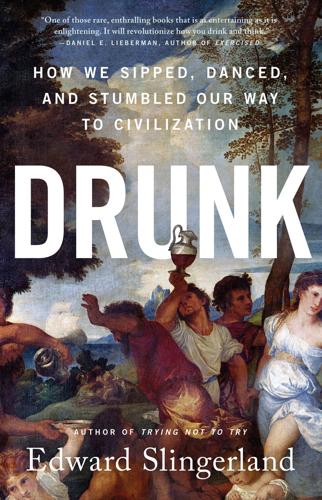
Drunk: How We Sipped, Danced, and Stumbled Our Way to Civilization
by
Edward Slingerland
Published 31 May 2021
Of course, this is only one thread of the rich tapestry of non-reproductive sexual hijinks to which we are prone, but it suggests why evolution should be keenly alert to the subversion of its designs. A study that involved taunting sexually deprived fruit flies reinforces this concern. Given how tiny and apparently utterly unlike us they are, fruit flies (Drosophila) are surprisingly good proxies for humans in many respects, including the way they process alcohol.30 Fruit flies like booze, they get drunk, and it stimulates their reward systems in a manner similar to ours. They can also become alcoholics: flies come to prefer heavily alcohol-laden food over regular food, and this desire becomes more powerful over time.
…
Ann Arbor: University of Michigan Press. DeSteno, D., C. Breazeal, R. H. Frank, D. Pizarro, J. Baumann, L. Dickens, and J. J. Lee. (2012). “Detecting the trustworthiness of novel partners in economic exchange.” Psychological Science, 23(12), 1549–1556. Devineni, A. V., and U. Heberlein. (2009). “Preferential ethanol consumption in Drosophila models features of addiction.” Current Biology, 19(24), 2126–2132. Dietler, Michael. (2006). “Alcohol: Anthropological/archaeological perspectives. Annual Review of Anthropology, 35, 229–249. Dietler, Michael. (2020). “Alcohol as Embodied Material Culture: Anthropological Reflections of the Deep Entanglement of Humans and Alcohol.”
…
Chelune, J. Talley, G. Kay, and G. Curtiss. (1993). Wisconsin Card Sorting Test Manual: Revised and Expanded. Lutz, FL: Psychological Assessment Resources. Heberlein, Ulrike, Fred W. Wolf, Adrian Rothenfluh, and Douglas J. Guarnieri. (2004). “Molecular genetic analysis of ethanol intoxication in drosophila melanogaster1.” Integrative and Comparative Biology, 44(4), 269–274. Heidt, Amanda. (2020, June 8). “Like Humans, These Big-Brained Birds May Owe Their Smarts to Long Childhoods.” Science News. Heinrich, Bernd. (1995). “An experimental investigation of insight in common ravens (Corvus corax).”

Energy: A Human History
by
Richard Rhodes
Published 28 May 2018
The son of a university mathematician who had given up teaching for farming in southern Alabama, Sturtevant discovered gene mapping while still a Columbia University undergraduate. That work, begun in 1911 and published in 1913, won him a desk in the famous “fly room” at Columbia where fruit flies—Drosophila melanogaster—served as model organisms for genetic research. Sturtevant moved to Caltech in 1928 and taught and did research there for the rest of his career, studying the genetics of Drosophila, horses, fowl, mice, moths, snails, iris, and evening primrose.30 He issued his challenge to the AEC chairman in Washington in June 1954 during his annual address as president of the Pacific Division of the American Association for the Advancement of Science.
…
A key figure in this debate was a geneticist named Hermann Muller, a small dynamo of a man, five feet two inches tall, born in Manhattan in 1890 and another denizen of the fly room as a Columbia undergraduate and graduate student. In 1926, now a professor of zoology at the University of Texas in Austin, Muller reported discovering artificial mutation—demonstrating for the first time that irradiating Drosophila with X-rays increased its mutation rate. That discovery, giving researchers an artificial method of inducing mutation, made it possible to shape experiments to study the genetic basis of life. Muller received the 1946 Nobel Prize in Physiology or Medicine for his discovery. An iconoclastic socialist, Muller had a deep interest in eugenics.
…
Fayetteville: University of Arkansas Press, 1996. First published 1975. Casey, Robert. The Model T: A Centennial History. Baltimore: Johns Hopkins University Press, 2008. Caspari, Ernest, and Curt Stern. “The Influence of Chronic Irradiation with Gamma-Rays at Low Dosages on the Mutation Rate in Drosophila Melanogaster.” Genetics 33, no. 1 (1948): 75–95. Castaneda, Christopher J. Invisible Fuel: Manufactured and Natural Gas in America, 1800–2000. New York: Twayne, 1999. ———. Regulated Enterprise: Natural Gas Pipelines and Northeastern Markets, 1938–1954. Columbus: Ohio State University Press, 1993. ———.
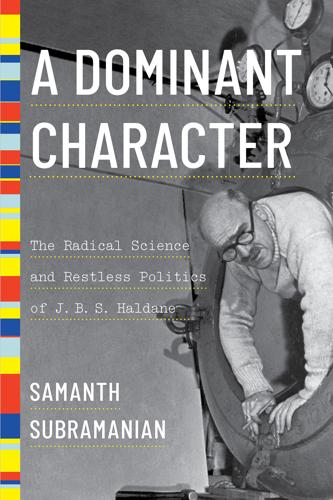
A Dominant Character
by
Samanth Subramanian
Published 27 Apr 2020
The dissenters had been shaken down, their opinions erased, their spirit broken. In a further matter of weeks, the party ordered universities to dismiss lecturers and professors who held views that contradicted Lysenko. Libraries destroyed their old genetics textbooks; research stations shut down; laboratories murdered every last fruit fly in the stocks of Drosophila that they used to run genetic experiments. Scientific institutions prominently displayed portraits of Lysenko. If you wished, you could buy a bust of the man, or you could visit a monument to him. In a state-sanctioned book of folk songs, one composition ran: Merrily play on, accordion With my girl friend, let me sing Of the eternal glory of Academician Lysenko He walks the Michurin path With firm tread; He protects us from being duped By Mendelist-Morganists.
…
One of the other speakers had suggested that Lysenko, a second-rate man, couldn’t be expected to have first-rate ideas. “I remember you saying much the same about Lysenko yourself at one time,” she recalled. If acquired characters were indeed heritable, Naomi said, she would naturally be delighted. “But equally obviously, the Drosophila work is still valid and it doesn’t help to call people names.” Some of the Russian scientists who disagreed with Lysenko were sure to have been doing important, necessary work, and she had no way of knowing if they had been ousted from their positions. “This, I think, represents the point of view of a good many people who are worried, willing to suspend judgement, but also anxious not to condone the kind of thing which they condemned in the Nazi scientists.
…
Other studies have come up with a range from one in 55 million to one in 100 million. 202 experiments didn’t bear out its calculations: The American scientist Bruce Wallace conducted studies on fruit fly populations in the 1950s and published two major papers in the second half of that decade. In a speech in 1986, speaking about genetic load half a century after Haldane’s paper, Wallace said that, in his studies, “genetic load calculations failed to predict events that actually transpired in the Drosophila populations.” 202 not a burden but an asset: Wallace makes this point in his speech, titled “Fifty Years of Genetic Load,” delivered as the Wilhelmine E. Key Invitational Lecture in 1986. 202 at least two, on average: Yann Lesecque, Peter D. Keightley, and Adam Eyre-Walker, “A Resolution of the Mutation Load Paradox in Humans,” Genetics, 191, no. 4 (August 2012): 1321–30.
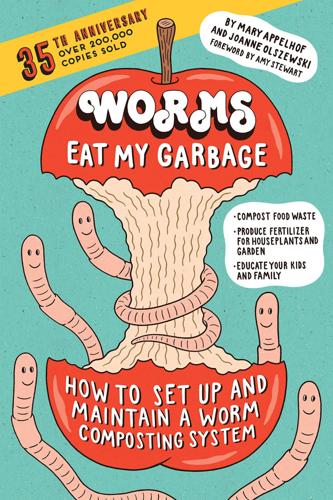
Worms Eat My Garbage, 35th Anniversary Edition: How to Set Up and Maintain a Worm Composting System: Compost Food Waste, Produce Fertilizer for Houseplants and Garden, and Educate Your Kids and Family
by
Mary Appelhof
and
Joanne Olszewski
Published 26 Dec 2017
I would have to answer, “Flies. Not odor, not maintenance, not worm crawls, but flies — whether they be fruit flies or fungus gnats.” Not every box has them, and not every box that experiences them has them all the time, but when they are present, they are a nuisance. The flies I particularly alert you to are tiny: Drosophila melanogaster, commonly known as fruit or vinegar flies. You may remember this organism from genetics lab. There are many families of fungus gnats, all of which are in the order Diptera. These may live in the worm bin, often seeming to sort of jump and scurry around on the bedding. Gnats are not dangerous; however, they bite.
…
Controls If flies become a problem, try one or more of these remedies: Get rid of the adults by trapping near either the worm bin or the food-storage area. Stop feeding the worms for two or three weeks to let the existing larvae pupate and hatch. Cover food waste with bedding to prevent another population explosion. It is important to understand how the fruit fly Drosophila melanogaster develops in order to trap it. This insect goes through four stages in its life cycle. An adult fruit fly can live for over 10 weeks and the female can start producing 50 to 70 eggs per day within a week of emerging from the pupal stage. Eggs are laid in fruit (thus the name). Once hatched, the eggs become larvae, which not only feed on the fruit but cause it to rot faster.
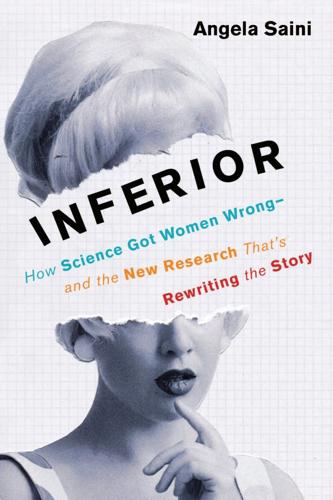
Inferior: How Science Got Women Wrong-And the New Research That's Rewriting the Story
by
Angela Saini
Published 29 May 2017
“Gender Differences and Similarities in Receptivity to Sexual Invitations: Effects of Location and Risk Perception.” Archives of Sexual Behavior 44, no. 8 (2015): 2257–65. Gowaty, Patricia Adair, Rebecca Steinichen, and Wyatt W. Anderson. “Mutual Interest Between the Sexes and Reproductive Success in Drosophila pseudoobscura.” Evolution 56, no. 12 (2002): 2537–40. Gowaty, Patricia Adair, Yong-Kyu Kim, and Wyatt W. Anderson. “No Evidence of Sexual Selection in a Repetition of Bateman’s Classic Study of Drosophila melanogaster.” Proceedings of the National Academy of Sciences of the United States of America 109, no. 29 (2012): 11740–45. Trivers, Robert L. “Sexual Selection and Resource-Accruing Abilities in Anolis garmani.”
…
Chapter 6: Choosy, Not Chaste Clark, Russell D., and Elaine Hatfield. “Gender Differences in Receptivity to Sexual Offers.” Journal of Psychology and Human Sexuality 2, no. 1 (1989): 39–55. ——. “Love in the Afternoon.” Psychological Inquiry 14, nos. 3 and 4 (2003): 227–31. Bateman, Angus J. “Intra-Sexual Selection in Drosophila.” Heredity 2 (1948): 349–68. Trivers, Robert L., “Parental Investment and Sexual Selection.” In Sexual Selection and the Descent of Man, edited by Bernard Campbell, 136–79. Chicago: Aldine, 1972. Symons, Donald. The Evolution of Human Sexuality. New York: Oxford University Press, 1979. Geertz, Clifford.
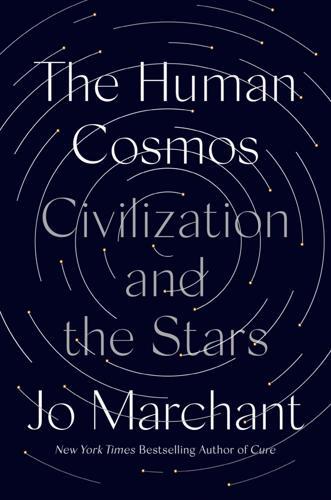
The Human Cosmos: A Secret History of the Stars
by
Jo Marchant
Published 15 Jan 2020
“desynchronization”: Aschoff, “Circadian Rhythms”; Jürgen Aschoff et al., “Desynchronization of Human Circadian Rhythms,” Japanese Journal of Physiology 17 (1967): 450–57. three mutant fly strains: Ronald Konopka and Seymour Benzer, “Clock Mutants of Drosophila melanogaster,” PNAS 68 (1971): 2112–16. named the gene “period”: Pranhitha Reddy et al., “Molecular Analysis of the Period Locus in Drosophila melanogaster and Identification of a Transcript Involved in Biological Rhythms,” Cell 38 (1984): 701–10. feedback loops . . . every type of life: Carlos Ibáñez, “Scientific Background: Discoveries of Molecular Mechanisms Controlling the Circadian Rhythm,” The Nobel Assembly, 2017, https://www.nobelprize.org/uploads/2018/06/advanced-medicineprize2017.pdf.
…
“see” magnetic field lines: Peter Hore and Henrik Mouritsen, “The Radical-pair Mechanism of Magnetoreception,” Annual Review of Biophysics 45 (2016): 299–344. human cryptochrome protein into fruit flies: Lauren Foley et al., “Human Cryptochrome Exhibits Light-dependent Magnetosensitivity,” Nature Communications 2 (2011): 356. They are also crucial components: Taishi Yoshii et al., “Cryptochrome Mediates Light-dependent Magnetosensitivity of Drosophila’s Circadian Clock,” PLoS Biology 7 (2009): 813–19; Thorsten Ritz et al., “Cryptochrome—a Photoreceptor with the Properties of a Magnetoreceptor?,” Communicative & Integrative Biology 3 (2010): 24–27. quintessential “gear”: Gegear, “Animal Cryptochromes.” Cryptochromes are also among: Fukushiro, “Lunar Phase-dependent Expression”; Oldach et al., “Transcriptome Dynamics.”
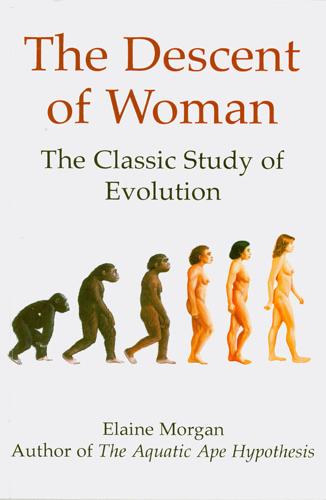
The Descent of Woman
by
Elaine Morgan
Published 1 Feb 2001
By the operation of natural selection, those demes even if reunited would most often not interbreed but remain fore-ever distinct and crystallized into two species—as it were the great auk and the little auk. And the factor by which natural selection ensures this is the choosiness of the females, who tend to be conservative in their preferences. From Drosophila upward, they tend to reject males who look or behave differently from the norm. And from Drosophila upward (with one sole exception) they are the final arbiters. If they kick and dodge and extrude their ovipositors the wedding is simply not on. But the hominid’s female, when she returned to the land, was no longer either the initiator or the final arbiter in the selection process.
…
See also Homosexuality De Vore, Irven, 15, 16, 45, 79, 176; on aggression in monkeys, 200; on amiability in chimps, 186 Dimond, Stuart, 80 Dinosaurs, 136 Dipodomys, 51 Display 194–97, 215 Diving, 34, 45 Division of labour, 114, 217, 236. See also Hunters and hunting; Work Dogs, 99, 122–23 Dolphins, 64–66, 127–29 Dominance, 182–183, 192–96, 236–37, 262. See also Aggression; specific species Douroucoulis, 107 Drosophila, 80 Dugongs, 28, 65–66, 130 Ears, 59 Eels, 148–49 Eimerl, Sarel, 15, 16, 79 Elephant seals (sea elephants), 65, 202 Elephants, 41, 136–42, 166 Elkan, E., 75 Ellis, Havclock, 68, 101 Embracing, 107. See also Sex Emotions, expressing, 45–50. See also Aggression; Love Emperor penguins, 94 English (sex expert), 71 Eocene epoch, 138 Eskimos, 165 Europe, 132 Exaltolide, 120 Expressions, facial, 46–50, 121 Eyebrows, 46–47ff.
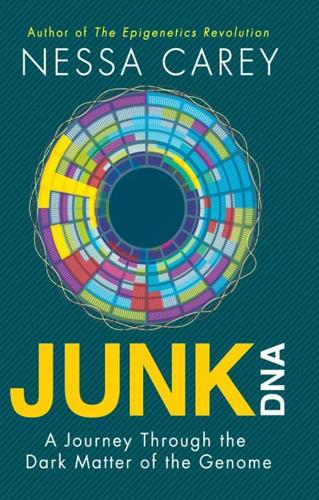
Junk DNA: A Journey Through the Dark Matter of the Genome
by
Nessa Carey
Published 5 Mar 2015
Science. 2000 Jun 23;288(5474):2215–9 6. Blower MD, Karpen GH. The role of Drosophila CID in kinetochore formation, cell-cycle progression and heterochromatin interactions. Nat Cell Biol. 2001 Aug;3(8):730–9 7. Hori T, Amano M, Suzuki A, Backer CB, Welburn JP, Dong Y, McEwen BF, Shang WH, Suzuki E, Okawa K, Cheeseman IM, Fukagawa T. CCAN makes multiple contacts with centromeric DNA to provide distinct pathways to the outer kinetochore. Cell. 2008 Dec 12;135(6):1039–52 8. Heun P, Erhardt S, Blower MD, Weiss S, Skora AD, Karpen GH. Mislocalization of the Drosophila centromere-specific histone CID promotes formation of functional ectopic kinetochores.
…
Bogdanik LP, Chapman HD, Miers KE, Serreze DV, Burgess RW. A MusD retrotransposon insertion in the mouse Slc6a5 gene causes alterations in neuromuscular junction maturation and behavioral phenotypes. PLoS One. 2012;7(1):e30217 4. Schneuwly S, Klemenz R, Gehring WJ. Redesigning the body plan of Drosophila by ectopic expression of the homoeotic gene Antennapedia. Nature. 1987 Feb 26–Mar 4;325(6107):816–8 5. Mortlock DP, Post LC, Innis JW. The molecular basis of hypodactyly (Hd): a deletion in Hoxa 13 leads to arrest of digital arch formation. Nat Genet. 1996 Jul;13(3):284–9 6. Rowe HM, Jakobsson J, Mesnard D, Rougemont J, Reynard S, Aktas T, Maillard PV, Layard-Liesching H, Verp S, Marquis J, Spitz F, Constam DB, Trono D.
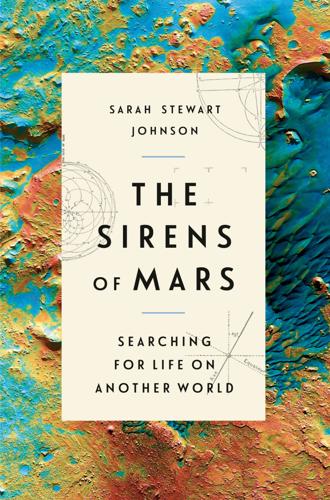
The Sirens of Mars: Searching for Life on Another World
by
Sarah Stewart Johnson
Published 6 Jul 2020
Bruce Betts, “We Make It Happen,” The Planetary Report. THE OLDEST PIECES INCLUDED “Visions of Mars: The Stories,” The Planetary Society. VOLTAIRE’S “MICROMÉGAS” Voltaire, “Micromégas,” Blake Linton Wilfong, ed., Free Sci-Fi Classics. STUDY DROSOPHILA Jeffrey R. Powell, Progress and Prospects in Evolutionary Biology: The Drosophila Model (Oxford University Press, 1997). DUTCH BOOK Kees Boeke, Cosmic View: The Universe in 40 Jumps (New York: John Day Company, 1957). This book was also the inspiration for a famous short film, Powers of Ten, produced by Ray and Charles Eames in 1977.
…
What kind of magnifying glass would have seen ancient cells slumbering so deep in the permafrost, barely respiring, so easily extinguished? Like the giant, I’d spent a lot of time trying to peer into worlds too small to see. Once, in one of my teaching labs at Oxford, I’d spent hours observing a tiny fruit-fly larva. Students of developmental biology and genetics, almost without exception, study Drosophila as a model organism—the hovering black dots of the adults as well as the eggs, larva, and pupa. The organisms grow quickly, and by playing with their genes, scientists can manipulate them rather mercilessly, causing them to grow eyes on their legs or extra sets of wings and learning a great deal in the process.

The Woman Who Smashed Codes: A True Story of Love, Spies, and the Unlikely Heroine Who Outwitted America's Enemies
by
Jason Fagone
Published 25 Sep 2017
An interior door led to the greenhouse that William managed, which is where Fabyan had him breeding new strains of crops and flowers, violets and wheat, and a type of corn with no cob. Upstairs, he said, was his sleeping quarters, and down here was a little laboratory where he ran genetics experiments with living fruit flies, Drosophila melanogaster. Elizebeth could see his bottles full of the teensy-weensy flies. Each bottle was about the size of a coffee mug, only thinner, and was smeared with some overripe banana that the flies ate. William explained that geneticists like to use fruit flies in experiments because they reproduce very quickly, then die.
…
old, creaky structure Transcript of ESF interview with Marshall Research Library staff members Tony Crawford and Lynn Biribauer, Tape #5, June 6, 1974, 5. teensy-weensy flies Ibid. quickly, then die Ibid. 50 one bottle of flies into another I am relying on my memory of performing this exact type of Drosophila experiment in high school. Thanks to my AP Biology teacher, Mr. Anderson. 150 workers Norman Klein, “Building Supermen at Fabyan’s Colony,” Chicago Daily News, April 22, 1921. Susumu Kobayashi Kopec, The Sabines at Riverbank, 27. Jack “the Sailor” Ibid. Belle Cumming Ibid., 50. Silvio Silvestri Ibid., 4, 26.
…
See also codebreakers defined, xvi cryptograms defined, xvi frequencies of letters, 69–70, 83–84 “The Gold-Bug” (Poe), 60–61 cryptographers, defined, xvi Cryptography Engineering (Schneier, Ferguson, and Kohno), 119 Cryptolog (journal), 340 “cryptologic schizophrenia,” 237–38 cryptology, defined, xvi Crypto-Set Headquarters Army Game, 155 Cuba, 180 Cuban Missile Crisis, 339 Cumming, Belle, 50, 159 Cunningham, Walter McCook, 322 Curie, Marie, 142 Czechoslovakia, 180, 308 Dachau concentration camp, 143, 178, 302 Dahl, Roald, 214–15 Darwin, Charles, 39 De Augmentis Scientarium (Bacon), 40 De Furtivis Literarum Notis (della Porta), 155–56 Delegacia de Ordem Politica e Social (DOPS), 245–46 Della Porta, Giambattista, 155–56 DeMille, Cecil B., 172 Detective Fiction Weekly, 169 Dickinson, Velvalee, 292–96 digital ciphers, 124 Dinieus, Edna Smith, 7, 170, 311 death of mother, 64–65 Mexican vacation, 207 William and, 60 disappearing ink, 184 DNA, 24 Doe, Harry, 144 Doll Lady. See Dickinson, Velvalee Donovan, William, 240–41, 316 Dove, Billie, 51 Driscoll, Agnes Meyer, 131 Drosophila melanogaster, 49–50, 58 Dunninger, Joseph “Amazing Dunninger,” 321 Duquesne, Frederick Joubert, 232–34, 300 Eagle’s Nest (Kehlsteinhaus), 306, 310–11 Ecuador, 180–81 Edison, Thomas, 24 Einsatzgruppen, 178 Einstein, Albert, 24, 79, 308, 355n Eisenhour, Bert, 30, 44, 48–49 electroshock therapy, 151, 219 Elizabeth I of England, 11–12, 38–39, 43, 57 Engels, Albrecht “Alfredo,” 227–29, 241–42, 243, 245, 247 Engledew Cottage, 46, 84, 97 Enigma, 125–26, 194–202, 263–64, 283 British codebreakers, 124, 196–97, 221 Circuit 3-N, 249, 260–61, 266–69, 272–75, 278–79, 285 Elizebeth’s work, 194, 197–202, 260–61, 267, 283, 284–86 Polish breakthroughs, 196–97, 200 William’s curiosity about, 125–26 Enola Gay, 313–14 Erasmus, 8, 9 Ezra, Isaac, 166–67, 331 Ezra, Judah, 166–67, 331 Fabyan, George appearance of, 52–53 declining health and death of, 158–59, 322 Elizebeth and, 46, 51–52, 53, 156 departure and return from Riverbank, 113–15 first meeting and job offer, 5–6, 15–19 family background of, 23–24, 89–90 personality of, 51–53, 95 Riverbank Laboratories.

Global Catastrophic Risks
by
Nick Bostrom
and
Milan M. Cirkovic
Published 2 Jul 2008
Ifwe suppose that alleles influencing many behaviours or skills in the human population provide an advantage when they are rare, but lose that advantage when they are common, there will be a tendency for the population to accumulate these alleles at such intermediate frequencies. And, as noted earlier, if these genes are maintained by frequency dependence, the cost to the population of maintaining this diversity can be low. Numerous examples of frequency-dependent balancing selection have been found in populations. One that influences behaviours has been found in Drosophila melanogaster. Natural populations of this fly are polymorphic for two alleles at a locus (for, standing for forager) that codes for a protein kinase. A recessive allele at this locus, sitter, causes larvae to sit in the same spot while feeding. The dominant allele, rover, causes its carriers to move about while feeding.
…
Singh-Manoux, A., Marmot, M.G., and Adler, N . E . (2005) . Does subjective social status predict health and change in health status better than objective status? Psychosomatic Medicine, 67, 855-86 1 . Sokolowski, M . B . , Pereira, H . S . , and Hughes, K . ( 1 997). Evolution offoraging behavior in Drosophila by density-dependent selection. Proc. Nat!. Acad. Sci. ( USA), 94, 7373-7377. Spira, A. and Multigner, L. ( 1 998). Environmental factors and male infertility. Human Reprod., 13, 2041-2042. Surovell, T., Waguespack, N . , and Brantingham, P . J . (2005). Global archaeo logical evidence for proboscidean overkill.
…
105, 106 deterministic systems, probability estimates 6 developing countries, vulnerability to biological attack 473-4 developmental period, artificial intelligence 322 diagnosis, infectious disease 469-70 Diamond, ) . 66, 357 Dick, S.). 1 3 3 die rolling, conjunction fallacy 96-7 diffusion of responsibility 1 1 0 dinosaurs, extinction 5 1 disaster policy 372-5 disconfirmation bias (motivated scepticism) 99, 100 discount rates, global warming 192-3, 198, 200 disjunctive probability estimation 98 dispensationalism 74 disruptive technologies 432 distribution of disaster 367-9 distribution tails 1 5 6-7 DNA synthesis technology 458-60 increasing availability 450 outsourcing 465 risk management 463-4 dollar-loss power of disasters 368-9 Doomsday Argument 129-3 1 doomsday clock, Bulletin of Atomic Scientists vii, viii Index dotcom bubble burst, insurance costs 1 7 3 Drake equation 2 14-1 5 Drexler, K . E . 3 3 1 , 485, 486, 488, 495 Engines ofCreation 499-500 Nanosystems: Molecular Machinery, Manufacturing and Computation 501-2 Drosophila melanogaster, frequency-dependent balancing selection 63 dual-use challenge, biotechnolo gy 45 1-2, 455-8 Dubos, R., Man Adapting 304 duration, totalitarianism 506-10 537 education, role in nuclear disarmament 440-1 The Effects ofNuclear War, Office of Technolo gy Assessment ( 1 979) 389, 401 Elbaradei, M. 401 El Chich6n eruption ( 1982) effect on climate 270 effects on ocean productivity 2 1 1 electroweak theory 354-5 El Nino Southern Oscillation 278 emer gin g diseases 16, 82 emissions targets 277 dust showers, cosmic 2 3 1-3 emissions taxes 194-6, 197, 198 DWI M (Do-What-1-Mean) instruction emotions, artificial intelli gence 320-1 empty space transitions 355-7 322-3 Dynamics of Populations of Planetary Systems, Kneevic, Z. and Milani, A. 2 3 5 dys genic pressures 6 2 Dyson, F , scaling hypothesis 43-4, 4 5 early warnin g systems nuclear attack 384 terrorist-initiated false alarms 426-7 Earth ejection from solar system 35-6 end of complex life 8 fate of 34-5, 44 magnetic field reversals 250 variation in eccentricity 239 Earth-crossin g bodies, search for 226 earthquake insurance, California 173 earthquakes 7 risk mitigation 372 energy power 368 Earth's axis, wobbles 268 Earth system models of intermediate complexity (EM !
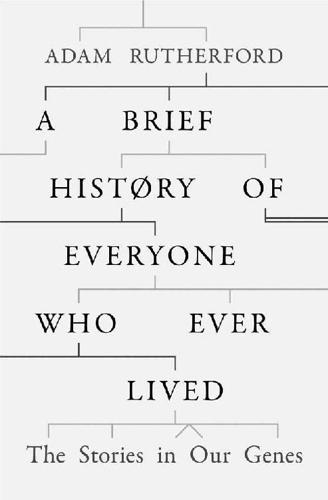
A Brief History of Everyone Who Ever Lived
by
Adam Rutherford
Published 7 Sep 2016
Somewhat counterintuitively, there were six species included in the project’s primary aims. A genome is much more useful if it can be compared to another, and that includes genomes from other species. So, the original mission of the first creatures to join the genome club aside from us included the most commonly used model organisms – the fly Drosophila melanogaster; the rat and the mouse; our closest ape relative, the chimp; and an oddity, the honey bee, for it is a social beast, and almost all members don’t get to reproduce at all, but serve their queen with whom they share exactly half their DNA. All of these were due to have their entire genomes read, deciphered and interrogated over the cusp of the twentieth century.
…
It is their story that is enlightened further by the recent forays into the genome, and so I must set aside those earlier monkish wanderers. 7 They are now, I am told, up to 10,000 complete genomes, though these have not been published yet. 8 Who is an incomparable genius. 9 It’s often said that the nursery rhyme ‘Ring a Ring of Roses’ is a plague incantation, with the atishoo sneezes being infectious expectorations, the roses being reddened marks preceding buboes, ‘a pocket full of posies’ some kind of traditional herbal protection and, of course, ‘we all fall down’ being representative of inevitable bucket kicking. However, this is almost certainly a twentieth-century post hoc analysis, and is rejected by most academic folklorists. 10 Drosophila researchers have no such formal nomenclature compunction. Many genes are initially discovered in these flies because we can manipulate and mutate them so much more easily than in bigger animals, and with fewer ethical barriers than necessarily exist for humans. Often, though, mammalian geneticists would then look for a similar or equivalent gene in mice or humans and, more often than not, the name for the human equivalent would be derived from the original – and often descriptive or just plain fun – moniker given to the fly.
…
Often, though, mammalian geneticists would then look for a similar or equivalent gene in mice or humans and, more often than not, the name for the human equivalent would be derived from the original – and often descriptive or just plain fun – moniker given to the fly. The stellar Nobel-prize winning embryologist Christiane Nüsslein-Volhard discovered the Toll family of genes in drosophila in the 1980s, and the name was given after she was heard to exclaim, ‘Das ist ja toll!’, which in English means, ‘That’s fantastic!’ 11 There are many ways to do this statistical trick, with different power and reliabilities, but Rasmussen used one called a Bayesian Markov Chain Monte Carlo in software called BEAST 2.
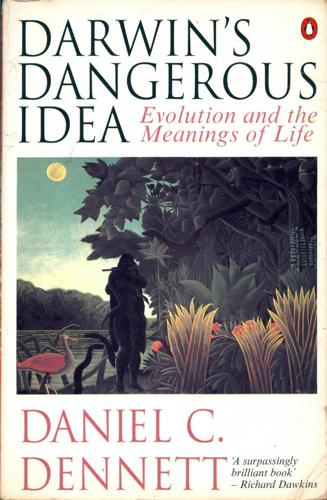
Darwin's Dangerous Idea: Evolution and the Meanings of Life
by
Daniel C. Dennett
Published 15 Jan 1995
For instance, Marilyn Houck (Houck et al. 1991.) has found evidence that, about forty years ago, in either Florida or Central America, a tiny mite that feeds on fruit flies happened to {142} puncture the egg of a fly of the Drosophila willistoni species, and in the process picked up some of that species' characteristic DNA, which it then inadvertently transmitted to the egg of a (wild) Drosophila melanogaster fly! This could explain the sudden explosion in the wild of a particular DNA element common in D. willistoni but previously unheard of in D. melanogaster populations. She might add: What else could explain it?
…
The orthodox theory mustn't presuppose any process of directed mutation — that would be a skyhook for sure — but it can leave open the possibility of somebody's discovering nonmiraculous mechanisms that can bias the distribution of mutations in speed-up directions. Eigen's ideas about quasi-species in chapter 8 are a case in point. In earlier chapters, I have drawn attention to various other possible cranes that are currently being investigated: trans-species "plagiarism" of nucleotide sequences (Houck's Drosophila), the crossovers made possible by the innovation of sex (Holland's genetic algorithms), the exploration of multiple variations by small teams (Wright's "demes") that return to the parent population (Schull's "intelligent species"), and Gould's "higher level species sorting," to name four. Since these debates all fit comfortably within the commodious walls of contemporary Darwinism, they don't need further scrutiny from us, fascinating though they are.
…
Geneticists have recently identified a chromosomal structure they call the homeobox; in spite of differences, this structure is identifiable in widely separated species of animals — perhaps in them all — so it is very ancient, and it plays a central role in embryological development. We may be startled at first to learn that a gene identified as playing a major role in eye development in the homeobox of mice has almost the same codon spelling as a gene dubbed (for its phenotypic effect) eyeless when it was identified in the homeobox of the fruitfly, Drosophila. But we would be even more flabbergasted were we to discover that the brain-cell complex that stored the original meme for bifocals in Benjamin Franklin's brain was the same as, or very similar to, the brain-cell complex that is called upon today to store the meme for bifocals whenever any child in Asia, Africa, or Europe first learns about them — by reading about them, seeing them on television, or noticing them on a parent's nose.
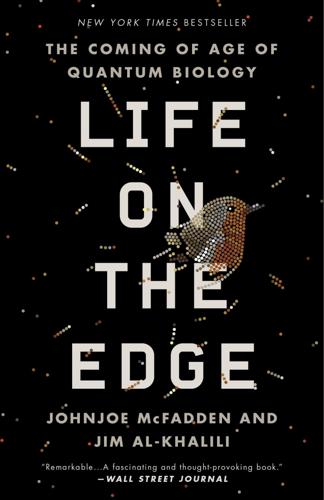
Life on the Edge: The Coming of Age of Quantum Biology
by
Johnjoe McFadden
and
Jim Al-Khalili
Published 14 Oct 2014
It must also have a body clock that, like our own, is similarly automatically entrained by light, to compensate for the changing times of sunrise and sunset during its long migration. But where does the monarch house its circadian sense? As the Urquharts discovered, butterflies are not the easiest animals to work with; the fruit fly, Drosophila, which we encountered in the last chapter sniffing its way through a maze, is a much more convenient laboratory insect as it breeds very rapidly and can easily mutate. Like us, fruit flies adjust their circadian rhythms to the cycles of light and dark. In 1998, geneticists found a fruit-fly mutant whose circadian rhythm could not be affected by exposure to light.2 They discovered that the mutation was in a gene encoding an eye protein called cryptochrome.
…
Burr, The Emperor of Scent: A True Story of Perfume and Obsession (New York: Random House, 2003). 10 A. Keller and L. B. Vosshall, “A psychophysical test of the vibration theory of olfaction,” Nature Neuroscience, vol. 7: 4 (2004), pp. 337–8. 11 M. I. Franco, L. Turin, A. Mershin and E. M. Skoulakis, “Molecular vibration-sensing component in Drosophila melanogaster olfaction,” Proceedings of the National Academy of Sciences, vol. 108: 9 (2011), pp. 3797–802. 12 J. C. Brookes, F. Hartoutsiou, A. P. Horsfield and A. M. Stoneham, “Could humans recognize odor by phonon assisted tunneling?,” Physical Review Letters, vol. 98: 3 (2007), p. 038101. Chapter 6: The butterfly, the fruit fly and the quantum robin 1 F.
…
Chapter 6: The butterfly, the fruit fly and the quantum robin 1 F. A. Urquhart, “Found at last: the monarch’s winter home,” National Geographic, Aug. 1976. 2 R. Stanewsky, M. Kaneko, P. Emery, B. Beretta, K. Wager-Smith, S. A. Kay, M. Rosbash and J. C. Hall, “The cryb mutation identifies cryptochrome as a circadian photoreceptor in Drosophila,” Cell, vol. 95: 5 (1998), pp. 681–92. 3 H. Zhu, I. Sauman, Q. Yuan, A. Casselman, M. Emery-Le, P. Emery and S. M. Reppert, “Cryptochromes define a novel circadian clock mechanism in monarch butterflies that may underlie sun compass navigation,” PLOS Biology, vol. 6: 1 (2008), e4. 4 S. M. Reppert, R.

The Numerati
by
Stephen Baker
Published 11 Aug 2008
We've seen how advertisers attempt to turn our mouse clicks and movements into mathematical models that anticipate our every urge. In what we've seen so far, it's others who have their way with our growing mountain of data. They grab it, they analyze it, they use it. Whether we're shopping or taking out a loan, we're laboring for the Numerati in much the way a drosophila fly works for a white-coated lab technician. Sometimes we get discounts and prizes. Sometimes we can say no. But once we agree to an offer, we're specimens. And yet, in the world of blogs and YouTube and social networking sites like MySpace, millions of people broadcast their lives voluntarily.
…
And if those whose paths we cross share these of these interests, our profile will pop up on their phones, and we presumably won't mind at all when one of them touches our elbow and says, "I had a coq au vin to die for at this little bistro..." In the workplace, a similar system could alert us to colleagues in the cafeteria who have mastered the Linux operating system or are knee-deep in the genetics of drosophila flies. But take this a step further. Our movements with a cell phone can paint an in-depth profile for each of us, each one endlessly more detailed than those forms my wife and I filled out for Chemistry.com. If we give them permission to examine us the way Dan Andresen and his team study their cows, they can scrutinize our movements and social networks.
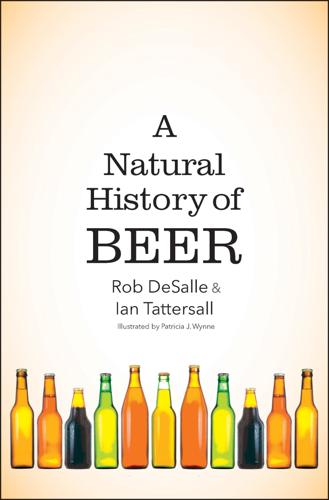
A Natural History of Beer
by
Rob DeSalle
Published 14 Jun 2019
“Case Report: Acute Alcohol Intoxication in a Hedgehog (Erinaceus europaeus).” Kleintierpraxis 37: 329–332. Shohat-Ophir, G., K. R. Kaun, R. Azanchi, H. Mohammed, and U. Heberlein. 2012. “Sexual Deprivation Increases Ethanol Intake in Drosophila.” Science 335: 1351–1355. Starmer, W. T., W. B. Heed, and E. S. Rockwood-Sluss. 1977. “Extension of Longevity in Drosophila mojavensis by Environmental Ethanol: Differences between Subraces.” Proceedings of the National Academy of Sciences of the United States of America 74, no. 1: 387–391. Tyson, N. deG. 1995. “The Milky Way Bar.” Natural History 103: 16–18.
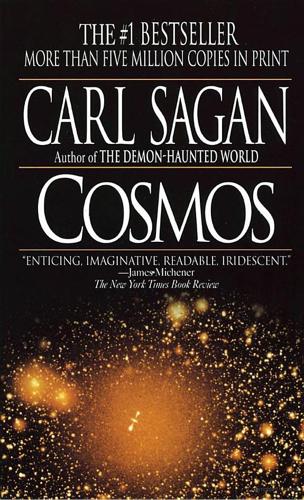
Cosmos
by
Carl Sagan
Published 1 Jan 1980
When I was a college undergraduate in the early 1950’s, I was fortunate enough to work in the laboratory of H. J. Muller, a great geneticist and the man who discovered that radiation produces mutations. Muller was the person who first called my attention to the Heike crab as an example of artificial selection. To learn the practical side of genetics, I spent many months working with fruit flies, Drosophila melanogaster (which means the black-bodied dew-lover)—tiny benign beings with two wings and big eyes. We kept them in pint milk bottles. We would cross two varieties to see what new forms emerged from the rearrangement of the parental genes, and from natural and induced mutations. The females would deposit their eggs on a kind of molasses the technicians placed inside the bottles; the bottles were stoppered; and we would wait two weeks for the fertilized eggs to become larvae, the larvae pupae, and the pupae to emerge as new adult fruit flies.
…
The females would deposit their eggs on a kind of molasses the technicians placed inside the bottles; the bottles were stoppered; and we would wait two weeks for the fertilized eggs to become larvae, the larvae pupae, and the pupae to emerge as new adult fruit flies. One day I was looking through a low-power binocular microscope at a newly arrived batch of adult Drosophila immobilized with a little ether, and was busily separating the different varieties with a camel’s-hair brush. To my astonishment, I came upon something very different: not a small variation such as red eyes instead of white, or neck bristles instead of no neck bristles. This was another, and very well-functioning, kind of creature with much more prominent wings and long feathery antennae.
…
he asked, his face illuminated from below. I didn’t know what this meant, so he had to explain: “Does it have big wings? Does it have feathery antennae?” I glumly nodded assent. Muller switched on the overhead light and smiled benignly. It was an old story. There was a kind of moth that had adapted to Drosophila genetics laboratories. It was nothing like a fruit fly and wanted nothing to do with fruit flies. What it wanted was the fruit flies’ molasses. In the brief time that the laboratory technician took to unstopper and stopper the milk bottle—for example, to add fruit flies—the mother moth made a dive-bombing pass, dropping her eggs on the run into the tasty molasses.

Erwin Schrodinger and the Quantum Revolution
by
John Gribbin
Published 1 Mar 2012
Genes are sections of chromosomes, and it is a change in a gene (sometimes called a mutation) that produces changes in individual members of a species on which evolution can act. But how big does a change in the molecule of life (whatever it may be) have to be in order to produce a significant change in the individual? In the 1935 paper that so intrigued Schrödinger, Delbrück and his colleagues, using data from experiments in which mutations were caused in fruit flies (drosophila) by X-rays, suggested that a mutation can be caused by a single change at one place in a molecule—in modern terminology, a change as simple as changing an A to a G in a DNA helix. The scientific paper that conveyed this dramatic information became known, from the colour of the cover on the reprints that circulated (increasingly after Schrödinger drew attention to it), as “the green pamphlet.”
…
He said in 1984, in a talk given at Indiana University: “From the moment I read Schrödinger’s What Is Life? I became polarised towards finding out the secret of the gene.” With typical chutzpah, he also said: “It was clear in those days that physicists were brighter than biologists.” Although he started working for a PhD on drosophila at Indiana University, in Bloomington, he soon switched to X-ray studies of a type of virus known as a bacteriophage. Armed with a fresh PhD and still only twenty-two, in 1950 Watson travelled to Copenhagen, where he carried out more work on bacteriophage, and then, in 1951, to Cambridge, where he met up with Crick at the Cavendish—through the pure chance of their happening to share a room at the laboratory.
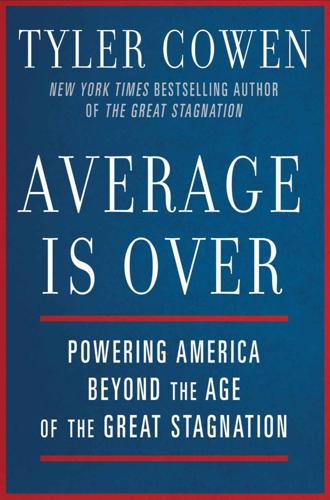
Average Is Over: Powering America Beyond the Age of the Great Stagnation
by
Tyler Cowen
Published 11 Sep 2013
The way humans are playing chess with computers now is, I propose, a model that high earners will be emulating in years and decades to come. To understand intelligent machines and their future influence, we would do well to note Alexander Kronrod’s idea that “chess is the Drosophila of artificial intelligence.” In other words, looking at chess is one way to make sense of the broader picture, just as the fruit fly (the Drosophila) has helped us decipher human genetics. After World War II, computer science pioneers Alan Turing and Claude Shannon both saw that computers would one day play chess, and wrote seminal articles on how it might happen; Turing was brilliant enough to figure out how computers would play chess even before other scientists had figured out computers.
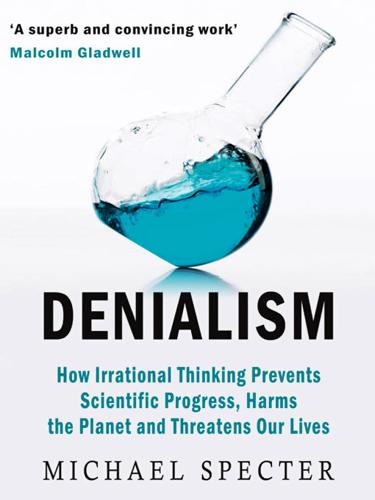
Denialism: How Irrational Thinking Hinders Scientific Progress, Harms the Planet, and Threatens Our Lives
by
Michael Specter
Published 14 Apr 2009
Meanwhile, that 99 percent figure has been published everywhere and is used as the basis of a propaganda war by both sides in the race debate. There is no disputing our homogeneity. It is also true, however, that we share 98.4 percent of our genes with chimpanzees. Few people would argue that makes us nearly identical to them. Even drosophila—the common fruit fly—has a genetic structure that shares almost two-thirds of its DNA with humans. Does that mean we are mostly like fruit flies? The simple and largely unanswered question remains: what can we learn from the other 1 percent (or less) of our genome that sets us apart from everyone else?
…
HHS common ancestor complementary and alternative medicine (CAM), see alternative medicines Complete Genomics Condit, Celeste conspiracy: assumptions of confusion among theorists of Continental Army, vaccination of cordyceps corporate greed cowpox cox-2 inhibitors (coxibs)- Creation Museum Crick, Francis Crohn’s disease crystal meth Cuba, agriculture in Cuyahoga River, afire cyclooxygenase-2 DALYs (disability-adjusted life years) Darwin, Charles deCODE genetics Defense Advanced Research Projects Agency (DARPA) denialism: arguments used in and conspiracy theories distortion of facts in forms of and loss of control use of term DES (diethylstilbestrol) diphtheria disability-adjusted life years (DALYs) disease, see illness disposable biological systems, creation of DNA: capacity of tools for study of comparisons of components of cost of processing decoding sequences of do-i t-yourself research on and genome studies Internet sales of open-source biology of personal analysis of and polio virus research recombinant technology resurrecting self-re plicating structure of synthetic Dole, Bob Dostoyevsky, Fyodor Drazen, Jeffrey drosophila Drug Enforcement Administration (DEA) drug metabolizing enzymes drug resistance Duesberg, Peter DuPont Corporation Dyson, Freeman echinacea education Ehrlich, Paul, The Population Bomb Einstein, Albert eleuthero (Siberian ginseng) Elizabeth I, queen of England Emanuel, Ezekiel encephalopathy Endy, Drew energy, new sources of energy drinks Enlightenment Enriquez, Juan environmental issues: and agriculture and genetics pollution solutions to ephedra ETC Group eugenics Every Child by Two evolution common ancestor in and genetic modification and human genome intelligent design as alternative to of machines manipulation of natural selection rejection of the idea of and survival theory of extinct animals, bringing back to life falciparum parasite Falk, Gary W.
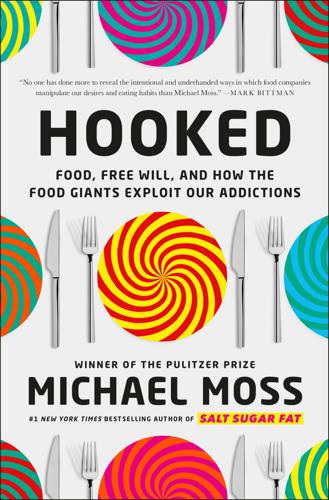
Hooked: Food, Free Will, and How the Food Giants Exploit Our Addictions
by
Michael Moss
Published 2 Mar 2021
Accounting for waste, the agency put the estimated per capita consumption in 2018 at 73 pounds, divided between sugar from cane and beets (40.3 pounds), high-fructose corn syrup (22 pounds), and other sources of sugar such as honey (10.7 pounds). “Our species is an ape” Paul Breslin to author. See also his work in Beth Gordesky-Gold et al., “Drosophila Melanogaster Prefers Compounds Perceived Sweet by Humans,” Chemical Senses 33 (2008): 301–9. trick those taste buds For some of the earliest reporting on this, see Burkhard Bilger, “The Search for Sweet,” New Yorker, May 14, 2006. PepsiCo contracted U.S. Securities Commission Form 10-K filing for Senomyx Inc. for year ending December 31, 2017.
…
might not help us lose weight Kelly Higgins and Richard Mattes, “A Randomized Controlled Trial Contrasting the Effects of 4 Low-Calorie Sweeteners and Sucrose on Body Weight in Adults with Overweight or Obesity,” American Journal of Clinical Nutrition 109 (2019): 1288–1301. as he points out Beth Gordesky-Gold et al., “Drosophila Melanogaster Prefers Compounds Perceived Sweet by Humans,” Chemical Senses 33, no. 3 (March 2008): 301–9. these flies love sugar Paul Breslin to author. “Despite inclusion in thousands” Qiao-Ping Wang et al., “Sucralose Promotes Food Intake Through NPY and a Neuronal Fasting Response,” Cell Metabolism 24 (2016): 75–90; Stephen Simpson to author.
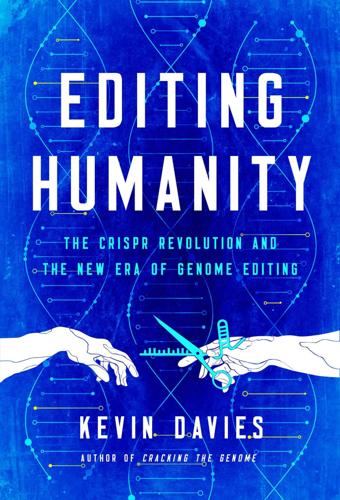
Editing Humanity: The CRISPR Revolution and the New Era of Genome Editing
by
Kevin Davies
Published 5 Oct 2020
Ethical issues aside, he wrote, “gene therapy will be routinely used in clinical practice, signifying a paradigm shift in the treatment of human disease.”13 Chandra teamed up with Dana Carroll, a biochemist at the University of Utah, who wanted to customize a ZFN to engineer a mutation in a classic animal model such as the fruit fly. If done right, the Drosophila cells would turn from brown to yellow. Carroll’s colleague saw the yellow bristles down the microscope.14 “If I were you, I’d be pretty excited,” he told his boss. By 2002,15 Carroll’s group had demonstrated the ability to engineer DNA in living organisms, the first use of ZFNs not merely to modulate the expression of certain genes, but actually to change their DNA sequence.
…
Sontheimer and Marraffini’s discovery of “a natural, highly specific, RNA-directed, DNA-targeting machinery in bacteria” suggested a route toward a “reprogrammable genome targeting system in eukaryotic cells.” Sontheimer’s plan was to port CRISPR into eukaryotic cells and test its ability to target specific genes. He would start small, working in yeast, then progress to Drosophila, and eventually mammalian cells in the final two years of the funding by 2012–13. RNA-directed genome targeting “has the potential to transform biomedical research, biotechnology, genetic medicine, and stem cell therapeutics,” he wrote. In retrospect, it was too much too soon. The proposal “hit a brick wall” and was rejected, and his companion patent application was abandoned.
…
Chandrasegaran, “Hybrid restriction enzymes: zinc finger fusions to Fok I cleavage domain,” Proceedings of the National Academy of Sciences USA 93, (1996): 1156–1160, https://www.ncbi.nlm.nih.gov/pmc/articles/PMC40048/. 13. S. Chandrasegaran and J. Smith, “Chimeric Restriction Enzymes: What is Next?,” Biological Chemistry 380, (1999): 841–848, https://www.ncbi.nlm.nih.gov/pmc/articles/PMC4033837/. 14. M. Bibikova et al., “Targeted Chromosomal Cleavage and Mutagenesis in Drosophila Using Zinc-Finger Nucleases,” Genetics 161, (2002): 1169–1175, https://www.genetics.org/content/161/3/1169.long. 15. M. Bibikova et al., “Stimulation of Homologous Recombination through Targeted Cleavage by Chimeric Nucleases,” Molecular and Cellular Biology 21, (2001): 289–297, https://mcb.asm.org/content/21/1/289. 16.
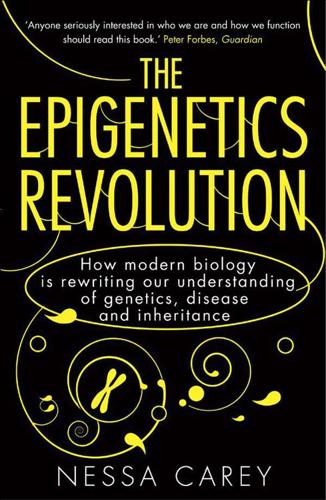
Epigenetics Revolution: How Modern Biology Is Rewriting Our Understanding of Genetics, Disease and Inheritance
by
Nessa Carey
Published 31 Aug 2011
It seemed that they bind to the region from which they are transcribed, and repress gene expression on that same chromosome. But if we go back to our analogy from the start of this chapter, we’d have to say that it’s now becoming clear we have built a pretty small shed and already cemented quite a bit of rubble to the roof. There’s an amazing family of genes, called HOX genes. When they’re mutated in fruit flies (Drosophila melanogaster) the results are incredible phenotypes, such as legs growing out of the head14. There’s a long ncRNA known as HOTAIR, which regulates a region of genes called the HOX-D cluster. Just like the long ncRNAs investigated by Jeannie Lee, HOTAIR binds the PRC2 complex and creates a chromatin region which is marked with repressive histone modifications.
…
Together, these data showed that honeybee cells could both ‘write’ and ‘read’ an epigenetic code. Until these data were published, nobody had really wanted to take a guess as to whether or not honeybees would possess a DNA methylation system. This was because the most widely used experimental system in insects, the fruit fly Drosophila melanogaster, whom we met earlier in this book, doesn’t methylate its DNA. It’s interesting to discover that honeybees have an intact DNA methylation system. But this doesn’t prove that DNA methylation is involved in the responses to royal jelly, or the persistent effects of this foodstuff on the physical form and behaviour of mature bees.
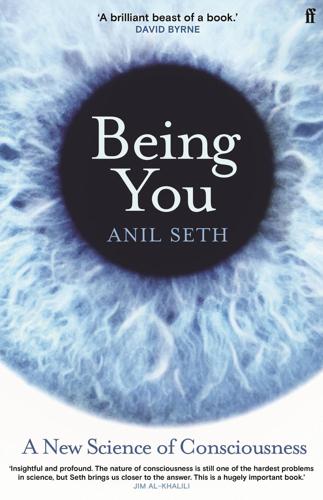
Being You: A New Science of Consciousness
by
Anil Seth
Published 29 Aug 2021
What about insects? Ants do not limp when a leg is damaged. However, their hard-bodied exoskeletons might be less susceptible to pain, and insect brains do possess forms of the opiate neurotransmitter system that is commonly associated with pain relief in other animals. A recent study found that the fruit fly Drosophila melanogaster displays a post-injury hypersensitivity to previously non-painful stimuli in a way that resembles ‘chronic pain’ in humans. And, remarkably, anaesthetic drugs seem to be effective across all animals, from single-celled critters all the way to advanced primates. All of this is suggestive, none of it is conclusive.
…
J., & Rawlins, R. G. (2016). ‘A seventy-five-year pictorial history of the Cayo Santiago rhesus monkey colony’. American Journal of Primatology, 78(1), 6–43. Khuong, T. M., Wang, Q. P., Manion, J., et al. (2019). ‘Nerve injury drives a heightened state of vigilance and neuropathic sensitization in Drosophila’. Science Advances, 5(7), eaaw4099. Kirchhoff, M. (2018). ‘Autopoeisis, free-energy, and the life-mind continuity thesis’. Synthese, 195(6), 2519–40. Kirchhoff, M., Parr, T., Palacios, E., et al. (2018). ‘The Markov blankets of life: autonomy, active inference and the free energy principle’. Journal of the Royal Society Interface, 15(138), 20170792.
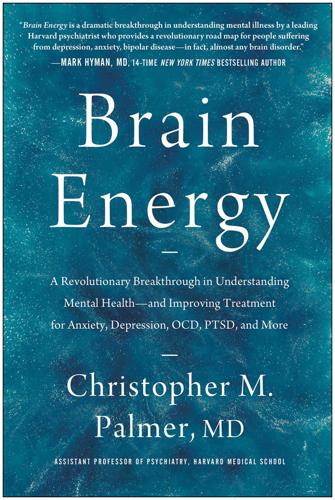
Brain Energy: A Revolutionary Breakthrough in Understanding Mental Health--And Improving Treatment for Anxiety, Depression, OCD, PTSD, and More
by
Christopher M. Palmer Md
Published 15 Nov 2022
M. Song, C. B. Talbot, et al. “A Potassium Channel ß-subunit Couples Mitochondrial Electron Transport to Sleep.” Nature 568(7751) (2019): 230–234. doi: 10.1038/s41586-019-1034-5. 9Keri J. Fogle, Catherina L. Mobini, Abygail S. Paseos, and Michael J. Palladino. “Sleep and Circadian Defects in a Drosophila Model of Mitochondrial Encephalomyopathy.” Neurobiol Sleep Circadian Rhythm 6 (2019): 44–52. doi: 10.1016/j.nbscr.2019.01.003. 10Guido Primiano, Valerio Brunetti, Catello Vollono, Anna Losurdo, Rossana Moroni, Giacomo Della Marca, and Serenella Servidei. “Sleep-Disordered Breathing in Adult Patients with Mitochondrial Diseases.”
…
Bipolar Disord 21(8) (2019): 741–773. doi: 10.1111/bdi.12847. Chapter 15 1N. D. Volkow, R. A. Wise, and R. Baler. “The Dopamine Motive System: Implications for Drug and Food Addiction.” Nat Rev Neurosci 18(12) (2017): 741–752. doi: 10.1038/nrn.2017.130. 2W. Li, Z. Wang, S. Syed, et al. “Chronic Social Isolation Signals Starvation and Reduces Sleep in Drosophila.” Nature 597(7875) (2021): 239–244. doi: 10.1038/s41586-021-03837-0. 3G. Xia, Y. Han, F. Meng, et al. “Reciprocal Control of Obesity and Anxiety–Depressive Disorder via a GABA and Serotonin Neural Circuit.” Mol Psychiatry 26(7) (2021): 2837–2853. doi: 10.1038/s41380-021-01053-w. 4E. Ginter and V.

Gene Eating: The Science of Obesity and the Truth About Dieting
by
Giles Yeo
Published 3 Jun 2019
PMID: 29482264. 5.www.nobelprize.org/nobel_prizes/medicine/laureates/2017 Accessed 22 May 2018. 6.Zehring, W.A., Wheeler, D.A., Reddy, P., Konopka, R.J., Kyriacou, C.P., Rosbash, M., and Hall, J.C., ‘P-element transformation with period locus DNA restores rhythmicity to mutant, arrhythmic Drosophila melanogaster’. Cell 39 (1984), 369–76; and Bargiello, T.A., Jackson, F.R., and Young, M.W., ‘Restoration of circadian behavioural rhythms by gene transfer in Drosophila’. Nature 312 (1984), 752–4. 7.Hoyle, N.P., Seinkmane, E., Putker, M., Feeney, K.A., Krogager, T.P., Chesham, J.E., Bray, L.K., Thomas, J.M., Dunn, K., Blaikley, J. and O’Neill, J.S., ‘Circadian actin dynamics drive rhythmic fibroblast mobilization during wound healing’.

Sorting Things Out: Classification and Its Consequences
by
Geoffrey C. Bowker
and
Susan Leigh Star
Published 25 Aug 2000
Scientific inversions of infrastructure were the theme of a pathbreaking edited volume, The Right Tools for the Job: At Work in Twentieth-Century Life Sciences (Clarke and Fujimura 1992). The purpose of this volume was to tell the history of biology in a new way-from the point of view of the materials that constrain and enable biological researchers. Rats, petri dishes, taxidermy, planaria, drosophila, and test tubes take center stage in this narrative. The standardization of genetic research on a few specially bred organisms (notably drosophila) has constrained the pacing of research and the ways the questions may be framed, and it has given biological supply houses an important, invisible role in research horizons. While elephants or whales might answer different kinds of biological questions, they are obviously unwieldy lab animals.

The Red Queen: Sex and the Evolution of Human Nature
by
Matt Ridley
Published 14 Aug 1993
Greenfield, Blackwell, Oxford, pp. 361–74 —1990, ‘The Mechanical Mind’, Annual Review of Neuroscience, 13:15–24 —(unpublished) ‘The Inevitability of Consciousness’, Chapter draft Basolo, A. L., 1990, ‘Female Preference Predates the Evolution of the Sword in Swordtail Fish’, Science, 250:808–10 Bateman, A. J., 1948, ‘Intrasexual Selection in Drosophila’, Heredity, 2:349–68 Beeman, R. W., Friesen, K. S. and Denell, R. E., 1992, ‘Maternal-effect Selfish Genes in Flour Beetles’, Science, 256:89–92 Bell, G., 1982, The Masterpiece of Nature, Croom Helm, London —1987, ‘Two Theories of Sex and Variation’, The Evolution of Sex and Its Consequences, ed.
…
A., 1968, Yanomamö: The Fierce People, Holt, Rinehart & Winston, New York —1988, ‘Life Histories, Blood Revenge and Warfare in a Tribal Population’, Science, 239:935–92 —and Irons, W., eds, 1979, Evolutionary Biology and Human Social Behavior: An Anthropological Perspective, Duxbury, North Scituate, Massachusetts Chao, L., 1992, ‘Evolution of Sex in RNA Viruses’, Trends in Ecology and Evolution, 7:147–51 —Tran, T., and Matthews, C., 1992, ‘Müller’s Ratchet and the Advantage of Sex in the Virus phi-6’, Evolution, 46:289–99 Charlesworth, B. and Hartl, D. L., 1978, ‘Population Dynamics of the Segregation Distorter Polymorphism of Drosophila melanogaster’, Genetics, 89:171–92 Charnov, E. L., 1982, The Theory of Sex Allocation, Princeton University Press, Princeton Cherfas, J. and Gribbin, J., 1984, The Redundant Male, Pantheon, New York Cherry, M. I., 1990, ‘Tail Length and Female Choice’, Trends in Ecology and Evolution, 5:349–50 Chomsky, N., 1957, Syntactic Structures, Mouton, The Hague Clarke, B.

Sorting Things Out: Classification and Its Consequences (Inside Technology)
by
Geoffrey C. Bowker
Published 24 Aug 2000
Scientific inversions of infrastructure were the theme of a path breaking edited volume, The Right Tools for the Job: At Work in Twenti eth-Century Life Sciences (Clarke and Fujimura 1 992). The purpose of this volume was to tell the history of biology in a new way-from the point of view of the materials that constrain and enable biological researchers. Rats, petri dishes, taxidermy, planaria, drosophila, and test tubes take center stage in this narrative. The standardization of genetic research on a few specially bred organisms (notably drosophila) has constrained the pacing of research and the ways the questions may be framed, and it has given biological supply houses an important, invisible role in research horizons. While elephants or whales might answer different kinds of biological questions, they are obviously un wieldy lab animals.

Lifespan: Why We Age—and Why We Don't Have To
by
David A. Sinclair
and
Matthew D. Laplante
Published 9 Sep 2019
When my fellow researcher Marc Tatar of Brown University visited me in Boston, I gave him a small vial of white, fluffy resveratrol powder—marked only with the letter R—to try on insects in his lab. He took it back to Rhode Island, mixed it with some yeast paste, and fed it to his fruit flies. A few months later, I got a call from him. “David!” he said. “What is this R stuff?” Under lab conditions, the fruit fly Drosophila melanogaster typically lives for an average of forty or so days. “We added a week to their lives and sometimes more than that,” Tatar told me. “On average, they’re living for more than fifty days.” In human terms, that’s an additional fourteen years. In my lab, resveratrol-fed roundworms also lived longer, an effect that required the worm sirtuin gene to be engaged.
…
Ferry, “The Effect of Retardation of Growth upon the Breeding Period and Duration of Life of Rats,” Science 45, no. 1160 (March 23, 1917): 294–95, http://science.sciencemag.org/content/45/1160/294. 4. I. Bjedov, J. M. Toivonen, F. Kerr, et al., “Mechanisms of Life Span Extension by Rapamycin in the Fruit Fly Drosophila melanogaster,” Cell Metabolism 11, no. 1 (January 6, 2010): 35–46, https://www.ncbi.nlm.nih.gov/pmc/articles/PMC2824086/. 5. Among Kagawa’s findings on the impact of Western diets on the Japanese were significant increases in colon and lung cancer and decreases in stomach and uterine cancers, although the subjects’ food consumption was still much smaller than that of Americans or Europeans.
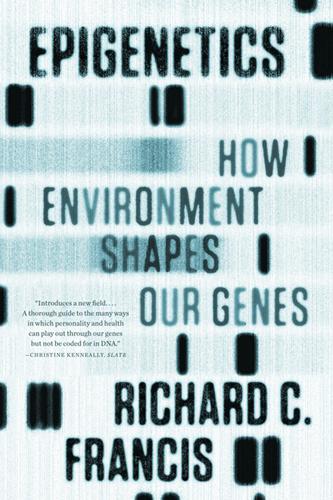
Epigenetics: How Environment Shapes Our Genes
by
Richard C. Francis
Published 14 May 2012
“The human sperm epigenome and its potential role in embryonic development.” Mol Hum Reprod 16(1): 37–47. Cassidy, S. B., and D. H. Ledbetter (1989). “Prader-Willi syndrome.” Neurol Clin 7(1): 37–54. Castle, W. E., F. W. Carpenter, et al. (1906). “The effects of inbreeding, cross-breeding, and selection upon fertility and variability of Drosophila.” Proc Am Acad Arts Sci 41. Castle, W. E., and S. Wright (1916). “Studies of inheritance in guinea pigs and rats.” Carnegie Inst Wash Publ 241: 163–190. Cattanach, B. M., C. V. Beechey, et al. (2006). “Interactions between imprinting effects: Summary and review.” Cytogenet Genome Res 113(1–4): 17–23.

How Emotions Are Made: The New Science of the Mind and Brain
by
Lisa Feldman Barrett
Published 6 Mar 2017
Gibson, William T., Carlos R. Gonzalez, Conchi Fernandez, Lakshminarayanan Ramasamy, Tanya Tabachnik, Rebecca R. Du, Panna D. Felsen, Michael R. Maire, Pietro Perona, and David J. Anderson. 2015. “Behavioral Responses to a Repetitive Visual Threat Stimulus Express a Persistent State of Defensive Arousal in Drosophila.” Current Biology 25 (11): 1401–1415. Gilbert, Charles D., and Wu Li. 2013. “Top-Down Influences on Visual Processing.” Nature Reviews Neuroscience 14 (5): 350–363. Gilbert, D. T. 1998. “Ordinary Personology.” In The Handbook of Social Psychology, edited by S. T. Fiske and L. Gardner, 89–150.
…
New York: Vintage. Maihöfner, Christian, Clemens Forster, Frank Birklein, Bernhard Neundörfer, and Hermann O. Handwerker. 2005. “Brain Processing During Mechanical Hyperalgesia in Complex Regional Pain Syndrome: A Functional MRI Study.” Pain 114 (1): 93–103. Malik, Bilal R., and James J. L. Hodge. 2014. “Drosophila Adult Olfactory Shock Learning.” Journal of Visualized Experiments (90): 1–5. doi:10.3791/50107. Malt, Barbara, and Phillip Wolff. 2010. Words and the Mind: How Words Capture Human Experience. New York: Oxford University Press. Marder, E., and A. L. Taylor. 2011. “Multiple Models to Capture the Variability in Biological Neurons and Networks.”
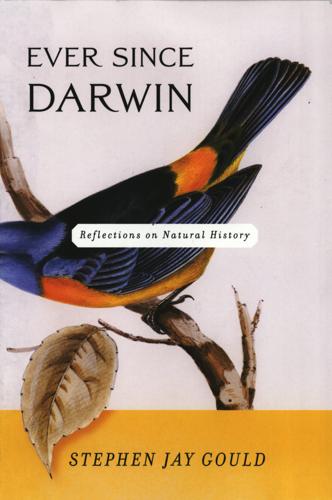
Ever Since Darwin: Reflections in Natural History
by
Stephen Jay Gould
Published 1 Jan 1977
If genes only specify that we are large enough to live in a world of gravitational forces, need to rest our bodies by sleeping, and do not photosynthesize, then the realm of genetic determinism will be relatively uninspiring. What is the direct evidence for genetic control of specific human social behavior? At the moment, the answer is none whatever. (It would not be impossible, in theory, to gain such evidence by standard, controlled experiments in breeding, but we do not raise people in Drosophila bottles, establish pure lines, or control environments for invariant nurturing.) Sociobiologists must therefore advance indirect arguments based on plausibility. Wilson uses three major strategies: universality, continuity, and adaptiveness. 1.Universality: If certain behaviors are invariably found in our closest primate relatives and among humans themselves, a circumstantial case for common, inherited genetic control may be advanced.

Generation A
by
Douglas Coupland
Published 2 Jan 2009
These crones, I wanted to tell them that what I would look for in a religion is an explanation of why life is so long. I’m still looking. Forget religion, I want to mutate. I want so badly to mutate. I was sitting in the sun in the Bois de Vincennes, willing my body to mutate into whatever it is human beings are slated to turn into next. Do we get giant drosophila fly eyes? Wings? Elephantine snouts? I dream of the day we mutate into something better than the hyped-up chimps we are, chimps who eat Knorr Swiss cream of cauliflower soup while pretending not to notice that half the planet’s at war, fighting over . . . what? Over the right to eat packaged soup without having to emotionally accept our species’ darkness.
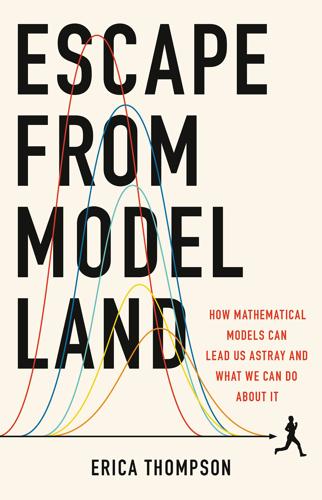
Escape From Model Land: How Mathematical Models Can Lead Us Astray and What We Can Do About It
by
Erica Thompson
Published 6 Dec 2022
In climate science, which typically uses very complex models run on supercomputers, the HadCM3 model developed by the UK’s Hadley Centre for Climate Research has been a workhorse of the global climate community for some years. It has been described by eminent climate scientist Isaac Held as the ‘E. coli of climate models’. (This was definitely intended as a compliment, as when Garry Kasparov referred to chess as a ‘drosophila [fruit fly] of reasoning’.) It was one of the first climate models not to require a so-called ‘flux correction’ or boundary adjustment to fit observed data, and one of the first to be made available more widely to download and run. As computing power has advanced, it is now able to be run on small personal computers rather than the supercomputers that today’s state-of-the-art models require.
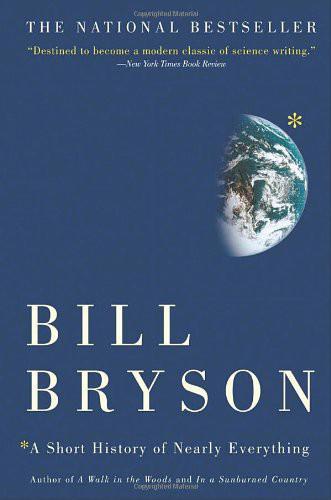
A Short History of Nearly Everything
by
Bill Bryson
Published 5 May 2003
By the turn of the twentieth century it was strongly suspected that they were involved in the passing on of traits, but no one knew how, or even really whether, they did this. Morgan chose as his subject of study a tiny, delicate fly formally called Drosophila melanogaster, but more commonly known as the fruit fly (or vinegar fly, banana fly, or garbage fly). Drosophila is familiar to most of us as that frail, colorless insect that seems to have a compulsive urge to drown in our drinks. As laboratory specimens fruit flies had certain very attractive advantages: they cost almost nothing to house and feed, could be bred by the millions in milk bottles, went from egg to productive parenthood in ten days or less, and had just four chromosomes, which kept things conveniently simple.

Testing Extreme Programming
by
Lisa Crispin
and
Tip House
Published 15 Apr 2003
Martin Fowler, Refactoring: Improving the Design of Existing Code, Addison-Wesley, 1999; 0201485672. Garth House, More Litanies for All Occasions, Judson Press, 2000; 0817013547. Marilyn G. House, Ice Skating Fundamentals, Kendall/Hunt, 1996; 0787209945. Verl Lee House, "The Interaction of Three Mutants Affecting the Vein Pattern in Drosophila melanogaster," Ph.D. diss., University of California at Berkeley, 1950. Ron Jeffries, Ann Anderson, and Chet Hendrickson, Extreme Programming Installed, Addison-Wesley, 2001; 0201708426. Andrew Hunt and David Thomas, The Practical Programmer: From Journeyman to Master, Addison-Wesley, 2000; 020161622X.
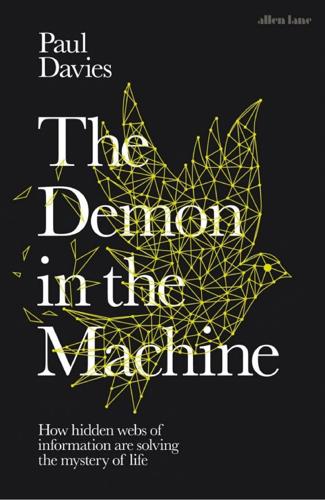
The Demon in the Machine: How Hidden Webs of Information Are Finally Solving the Mystery of Life
by
Paul Davies
Published 31 Jan 2019
The information in DNA is referred to as the genotype and the actual physical cell is called the phenotype. So one genotype can generate many different phenotypes. Fine. But how do liver cells gather in the liver, brain cells in the brain, and so on – the cellular equivalent of ‘birds of a feather flock together’? Most of what is known comes from the study of the fruit fly Drosophila. Some of the morphogens are responsible for causing undifferentiated cells to differentiate into the various tissue types – eyes, gut, nervous system, and so on – in designated locations. This establishes a feedback loop between cell differentiation and the release of other morphogens in different locations.

Wonderland: How Play Made the Modern World
by
Steven Johnson
Published 15 Nov 2016
In cognitive science, the litany of insights that derived from the study of chess could almost fill an entire textbook, insights that have helped us understand the human capacity for problem solving, pattern recognition, visual memory, and the crucial skill that scientists call, somewhat awkwardly, chunking, which involves grouping a collection of ideas or facts into a single “chunk” so that they can be processed and remembered as a unit. (A chess player’s ability to recognize and often name a familiar sequence of moves is a classic example of mental chunking.) Some cognitive scientists compared the impact of chess on their field to Drosophila, the fruit fly that played such a central role in early genetics research. But the prominence of chess in the first fifty years of both cognitive and computer science also produced a distorted vision of intelligence itself. It helped cement the brain-as-computer metaphor: a machine driven by logic and pattern recognition, governed by elemental rules that could be decoded with enough scrutiny.
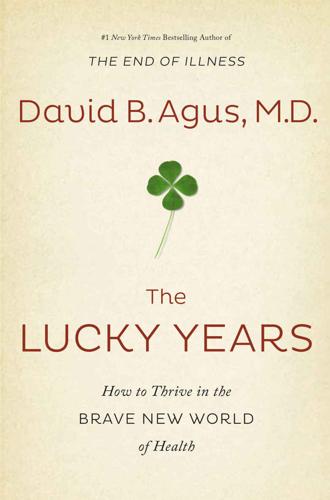
The Lucky Years: How to Thrive in the Brave New World of Health
by
David B. Agus
Published 29 Dec 2015
Kuhnle et al., “Association Between Sucrose Intake and Risk of Overweight and Obesity in a Prospective Sub-Cohort of the European Prospective Investigation into Cancer in Norfolk (EPIC-Norfolk),” Public Health Nutrition (February 23, 2015): 1–10 (Epub ahead of print). 8. S. Gill et al., “Time-Restricted Feeding Attenuates Age-Related Cardiac Decline in Drosophila,” Science 347, no. 6227 (March 13, 2015): 1265–69, doi:10.1126/science.1256682. Also see Michael Price, “You Are When You Eat,” San Diego State University News Center, March 12, 2015, http://universe.sdsu.edu/sdsu_newscenter/news_story.aspx?sid=75480. 9. Ellie Zolfagharifard, “400,000-Year-Old Teeth Reveal First Evidence of Man-Made Pollution—and Show the ‘Caveman Diet’ Really Was Balanced,” DailyMail.com (UK), June 17, 2015, www.dailymail.co.uk/sciencetech/article-3128818/400-000-year-old-teeth-reveal-evidence-man-pollution-shows-caveman-diet-really-balanced.html, accessed August 8, 2015. 10.
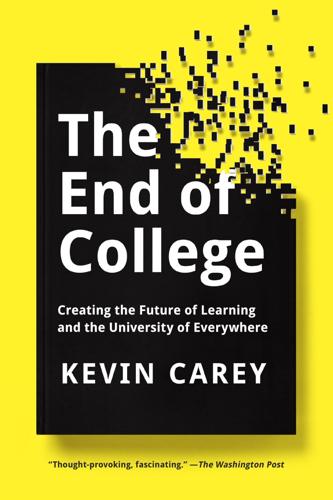
The End of College: Creating the Future of Learning and the University of Everywhere
by
Kevin Carey
Published 3 Mar 2015
The p-sets in this part of the course used another computer program, called the “Integrative Genome Viewer,” which allowed me to see what happens when mutations alter single base pairs in a DNA sequence that can run hundreds of millions of pairs long, resulting in a new set of instructions for protein creation and sometimes disastrous consequences for the organism in question. In another p-set, we had to breed multiple generations of fruit flies in a computer simulator and submit “cages” containing, say, 1,000 virtual drosophila showing a particular statistical distribution of characteristics—this many wings of this shape, this many eyes of that color—as evidence of the underlying genetic inheritance patterns. It was taxing work. As one of the MIT students taking the course later told me, “Learning science is about spending hours banging away at something until you get it right.”
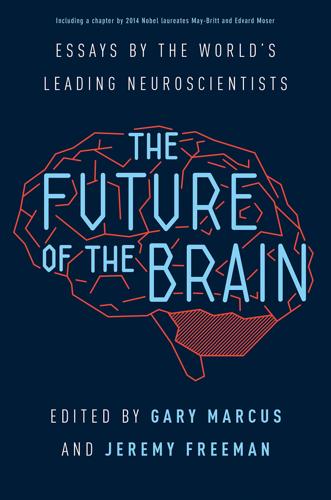
The Future of the Brain: Essays by the World's Leading Neuroscientists
by
Gary Marcus
and
Jeremy Freeman
Published 1 Nov 2014
Dombeck, and D. W. Tank. 2009. “Intracellular dynamics of hippocampal place cells during virtual navigation.” Nature 461 (7266): 941–46. doi:10.1038/nature08499. Seelig, J. D., M. E. Chiappe, G. K. Lott, A. Dutta, J. E. Osborne,M. B. Reiser, and V. Jayaraman. 2010. “Two-photon calcium imaging from head-fixed Drosophila during optomotor walking behavior. Nature Methods 7 (7): 535–40: doi:10.1038/nmeth.1468. PROJECT MINDSCOPE Christof Koch With Clay Reid, Hongkui Zeng, Stefan Mihalas, Mike Hawrylycz, John Philips, Chinh Dang, and Allan Jones The human brain, with its eighty-six billion nerve cells, is the most complex piece of organized matter in the known universe.

JPod
by
Douglas Coupland
Published 30 Apr 2007
You're a depressing assemblage of pop culture influences and cancelled emotions, driven by the sputtering engine of only the most banal form of capitalism. You spend your life feeling as if you're perpetually on the brink of being obsolete—whether it's labour market obsolescence or cultural unhipness. And it's all catching up with you. You live and die by the development cycle. You're glamorized drosophila flies, with the company regulating your life cycles at whim. If it isn't a budget-driven eighteen-month game production schedule, it's a five-year hardware obsolescence schedule. Every five years you have to throw away everything you know and learn a whole new set of hardware and software specs, relegating what was once critical to our lives to the cosmic slag heap."
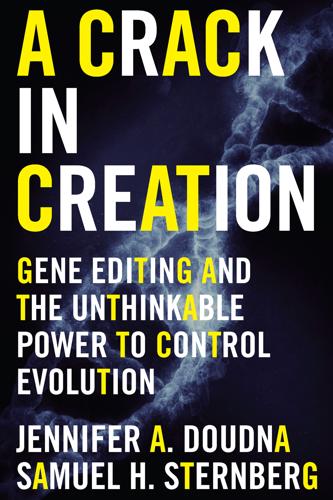
A Crack in Creation: Gene Editing and the Unthinkable Power to Control Evolution
by
Jennifer A. Doudna
and
Samuel H. Sternberg
Published 15 Mar 2017
also worked in frog eggs: M. Bibikova et al., “Stimulation of Homologous Recombination Through Targeted Cleavage by Chimeric Nucleases,” Molecular and Cellular Biology 21 (2001): 289–97. produce a precise genetic alteration in a whole organism: M. Bibikova et al., “Targeted Chromosomal Cleavage and Mutagenesis in Drosophila Using Zinc-Finger Nucleases,” Genetics 161 (2002): 1169–75. Matthew Porteus and David Baltimore were the first: M. H. Porteus and D. Baltimore, “Chimeric Nucleases Stimulate Gene Targeting in Human Cells,”Science 300 (2003): 763. Fyodor Urnov and colleagues corrected a mutation: F. D. Urnov et al., “Highly Efficient Endogenous Human Gene Correction Using Designed Zinc-Finger Nucleases,” Nature 435 (2005): 646–51.

The Transhumanist Reader
by
Max More
and
Natasha Vita-More
Published 4 Mar 2013
I think many of you know how this is going to play out. References Arrison, Sonia (2011) 100 Plus: How the Coming Age of Longevity Will Change Everything, from Careers and Relationships to Family and Faith. New York: Basic Books. Burke, Molly K., et al. (2010) “Genome-Wide Analysis of a Long-Term Evolution Experiment with Drosophila.” Nature 467, pp. 587–590. Comfort, Alex (1979) The Biology of Senescence, 3rd edn. New York: Elsevier North Holland, Inc. Cordain, Loren. (2002) The Paleo Diet. New York: Wiley. de Grey, Aubrey and Rae, M. (2007) Ending Aging. New York: St. Martin’s Griffin. de Vany, Arthur (2011) The New Evolution Diet.
…
New York: Wiley-Blackwell. Magary, Drew (2011) The Postmortal. London: Penguin Books. Martinez, Daniel E. (1998) “Mortality Patterns Suggest a Lack of Senescence in Hydra.” Experimental Gerontology 33, pp. 217–225. Matsagas, Kennedy, et al. (2009) “Long-Term Functional Side-Effects of Stimulants and Sedatives in Drosophila melanogaster.” PLoS One 4(8), e6578. Mueller, Laurence D., Rauser, Casandra L., and Michael R. (2011) Does Aging Stop? New York: Oxford University Press. Passanati, Hardip B., Rose, Michael R., and Matos, Margarida (2005) Methuselah Flies: A Case Study in the Evolution of Aging. Singapore: World Scientific Publishing.

Beautiful Visualization
by
Julie Steele
Published 20 Apr 2010
Leipzig: Universität Leipizig; Berlin: Freie Universität Berlin; Burlington, MA: OpenLink Software. http://dbpedia.org. Doreian, P., V. Batagelj, and A. Ferligoj. 2005. Generalized Blockmodeling (Structural Analysis in the Social Sciences). Cambridge: Cambridge University Press. Flybase. 2008. Rachel Drysdale and the FlyBase Consortium. FlyBase. Drosophila: 45–59. doi: 10.1007/978-1-59745-583-1_3. See also http://flybase.org/static_pages/docs/release_notes.html. Freebase. 2009. Freebase. San Francisco, CA: Metaweb Technologies. http://www.freebase.com. For data dumps, see http://download.freebase.com/datadumps/. Garner, Ralph. 1963. “A computer-oriented graph theoretic analysis of citation index structures.”
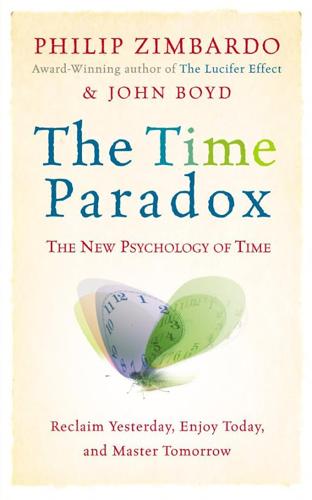
Time Paradox
by
Philip G. Zimbardo
and
John Boyd
Published 1 Jan 2008
Expose a fruit fly to the odor of tennis shoes, give it a very tiny electric shock, and for the rest of its very tiny life it will avoid places that smell tennis-shoey. The ability to associate pleasure or pain with its circumstances is so vitally important that nature has installed that ability in every one of her creatures, from Drosophila melanogaster to Ivan Pavlov. But if that ability is necessary for creatures like us, it certainly isn’t sufficient, because the kind of learning it enables is far too limited. If an organism can do no more than associate particular experiences with particular circumstances, then it can learn only a very small lesson, namely, to seek or avoid those particular circumstances in the future.
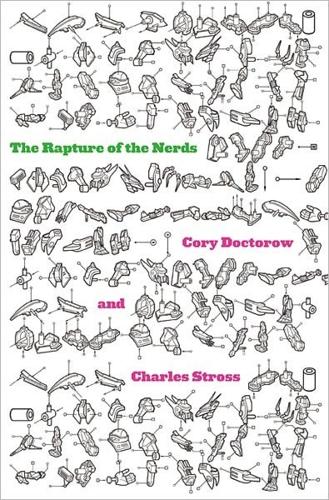
The Rapture of the Nerds
by
Cory Doctorow
and
Charles Stross
Published 3 Sep 2012
“But from traces of carapace scraped off the walls of the Bey residence nursery, we have obtained a partial genotype. Tell your guidebooks or familiars or whatever to download Exhibit B for you. As you can see, the genome of the said item is chimeric and shows signs of crude tampering, but it’s largely derived from Drosophila, Mus musculus, and a twenty-first-century situationist artist or politician called Sarah Palin. Large chunks of its genome appear to be wholly artificial, though, written entirely in Arabic, and there’s an aqueous-phase Turing machine partially derived from octopus ribosomes to interpret them. It looks as if something has been trying to use the sharia code as a platform for implementing a legal virtual machine.
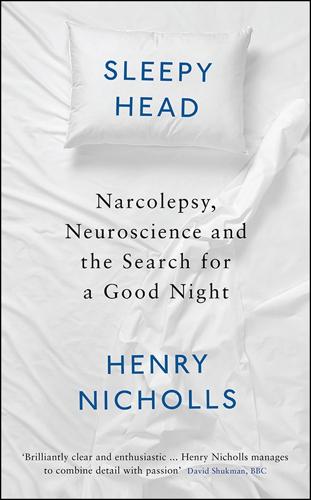
Sleepyhead: Narcolepsy, Neuroscience and the Search for a Good Night
by
Henry Nicholls
Published 1 Mar 2018
, 1 June 2017. 2 Let there be light p. 17 to sense the Sun without ever seeing it André Klarsfeld, ‘At the Dawn of Chronobiology’, 2013 <https://docs.google.com/viewer?a=v&pid=sites&srcid=ZGVmYXVsdGRvbWFpbnxrbGFyc2ZlbGRhbmRyZXxneDo0OTIyYzUwY2IyYWVjMjg2> [accessed 16 August 2017]. p. 18 they called it Period Ronald J. Konopka and Seymour Benzer, ‘Clock Mutants of Drosophila melanogaster’, Proceedings of the National Academy of Sciences, 68.9 (1971), 2112–16. p. 19 the circadian rhythm within each cell ‘The 2017 Nobel Prize in Physiology or Medicine - Press Release’, nobelprize.org, 10 February 2017, <http://www.nobelprize.org/nobel_prizes/medicine/laureates/2017/press.html> [accessed 29 October 2017].
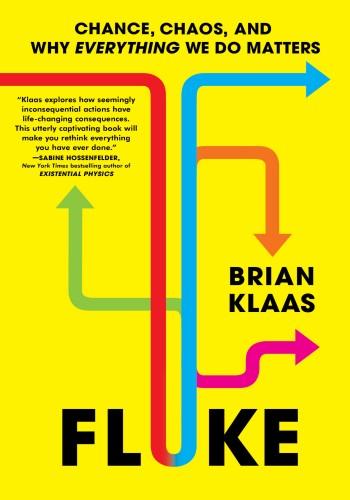
Fluke: Chance, Chaos, and Why Everything We Do Matters
by
Brian Klaas
Published 23 Jan 2024
moneyballing everything: Derek Thompson, “What Moneyball-for-Everything Has Done to American Culture,” Atlantic, 30 October 2022. 13 million data points: N. E. Humphries et al., “Environmental Context Explains Lévy and Brownian Movement Patterns of Marine Predators,” Nature 465 (7301) (2010): 1066–69. fruit fly larva with deactivated brains: J. Berni et al., “Autonomous Circuitry for Substrate Exploration in Freely Moving Drosophila Larvae,” Current Biology 22 (20) (2012): 1861–70. Karikó persisted: See, for example, David Cox, “How mRNA Went from a Scientific Backwater to a Pandemic Crusher,” Wired, 12 February 2020. should be made randomly: For a discussion on how this might work, see L. Roumbanis, “Peer Review or Lottery?
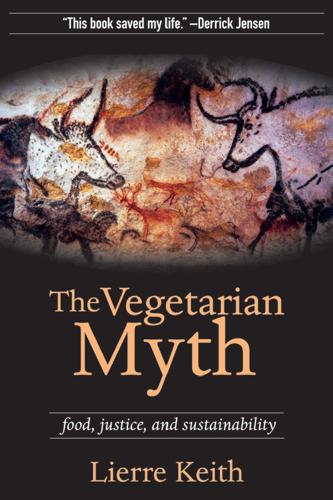
The Vegetarian Myth: Food, Justice, and Sustainability
by
Lierre Keith
Published 30 Apr 2009
Susan Allport dubs phyto-chemicals “plants’ armed services. Plants cannot flee from hungry predators, of course, so they became experts in chemical warfare instead.”119 They also use chemicals to call pollinators and protectors with a specificity that is exquisite enough to stop your breath. Saguaro cacti need a unique species of Drosophila fly. The cacti release a volatile steroidal compound that the flies must have to reach sexual maturity and reproduce. In return, the flies and their larva eat the decaying parts of the cacti, keeping the plants healthy. The volatiles are so precise that for 6,803 larvae on the average saguaro cactus, only one is not the correct species.120 Each of the world’s seven hundred plus species of figs has its own specific fig wasp, wasps who hand pollinate that fig’s seeds.
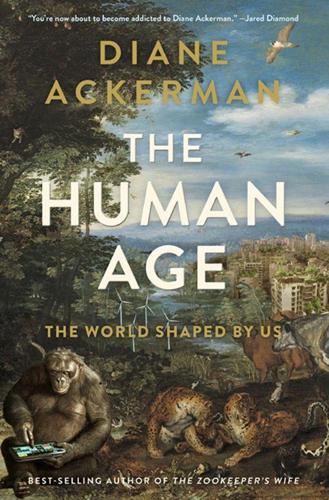
The Human Age: The World Shaped by Us
by
Diane Ackerman
Published 9 Sep 2014
As a Cornell grad student, I often stopped by the fetid biology lab to admire the eggplant-blackness of the bellies, the spiky hairs, the gaudy prisms of the eyes—some apricot, some teal, some brick red, some yellow, some the blue of ships on Delft pottery. I still recall the tiny haunting eyes of the fruit flies, like the captive souls of past lab assistants, and the swooping melody of their Latin name: Drosophila melanogaster, which translates poetically as “dark-bellied dew sipper.” Because fruit flies thrive in sultry weather (82°F), the lab offered students a warm den during those numbing upstate winters when ice clotted in beards and mittens, coeds exhaled stark white clouds, and the walkways looked like a toboggan run.

The Deep Learning Revolution (The MIT Press)
by
Terrence J. Sejnowski
Published 27 Sep 2018
Sydney Brenner has published his original story in S. Brenner, “Francisco Crick in Paradiso,” Current Biology. 6, no. 9 (1996): 1202: “I shared an office with Francis Crick for twenty years in Cambridge. At one time he was interested in embryology and spent a lot of time thinking about imaginal discs in Drosophila. One day, he threw the book he was reading down onto his desk with an exasperated cry. ‘God knows how these imaginal discs work!’ In a flash I saw the whole story of Francis arriving in heaven and Peter welcoming him with ‘Oh, Dr. Crick, you must be tired after your long journey. Do sit down, have a drink and relax.’
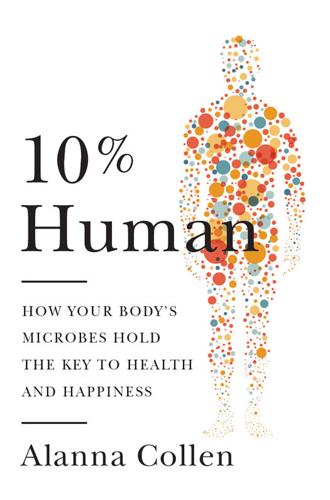
10% Human: How Your Body's Microbes Hold the Key to Health and Happiness
by
Alanna Collen
Published 4 May 2015
Gastroenterology 141: 599–609. 15. Voigt, C.C., Caspers, B. and Speck, S. (2005). Bats, bacteria and bat smell: Sex-specific diversity of microbes in a sexually-selected scent organ. Journal of Mammalogy 86: 745–749. 16. Sharon, G. et al. (2010). Commensal bacteria play a role in mating preference of Drosophila melanogaster. Proceedings of the National Academy of Sciences 107: 20051–20056. 17. Wedekind, C. et al. (1995). MHC-dependent mate preferences in humans. Proceedings of the Royal Society B 260: 245–249. 18. Montiel-Castro, A.J. et al. (2013). The microbiota–gut–brain axis: neurobehavioral correlates, health and sociality.
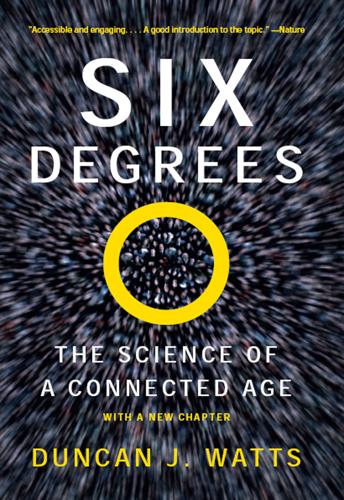
Six Degrees: The Science of a Connected Age
by
Duncan J. Watts
Published 1 Feb 2003
It was, he told me, one of the model organisms that biologists have picked out for extensive study, and possibly someone had looked at its neural network. Possibly! After only a cursory amount of research, and helped out by a biologist friend of Steve’s who happened to be an expert on C. elegans, I quickly discovered that C. elegans is no bit player in the world of biomedical research. Alongside the fruit fly Drosophila, the bacterium E. coli, and possibly yeast, the tiny earth-dwelling nematode C. elegans is the most studied and, at least among worm biologists, the most celebrated of organisms. First proposed as a model organism in 1965 by Sydney Brenner, a contemporary of Watson and Crick, and thirty years later a pivotal player in the human genome project, C. elegans has spent over three decades under the microscope.
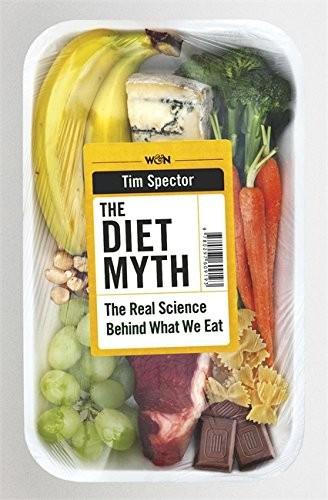
The Diet Myth: The Real Science Behind What We Eat
by
Tim Spector
Published 13 May 2015
Is eating behavior manipulated by the gastrointestinal microbiota? Evolutionary pressures and potential mechanisms. 35 Vijay-Kumar, M., Science (9 Apr 2010); 328(5975): 228–31. Metabolic syndrome and altered gut microbiota in mice lacking Toll-like receptor 5. 36 Shin, S.C., Science (2011); 334 (6056): 670–4. Drosophila microbiome modulates host developmental and metabolic homeostasis via insulin signalling. 37 Tremaroli, V., Nature (13 Sep 2012); 489(7415): 242–9. Functional interactions between the gut microbiota and host metabolism. 7 Protein: Animal 1 Diamond, J., Guns, Germs and Steel (Norton, 1997) 2 Atkins, R., The Diet Revolution (Bantam Books, 1981) 3 Bueno, N.B., Br J Nutr (Oct 2013); 110(7): 1178–87.

Visual Thinking: The Hidden Gifts of People Who Think in Pictures, Patterns, and Abstractions
by
Temple Grandin, Ph.d.
Published 11 Oct 2022
Embryo Project Encyclopedia, December 27, 2017. http://embryo.asu.edu/handle/10776/13035. “Life of Thomas Alva Edison.” Library of Congress. https://www.loc.gov/collections/edison-company-motion-pictures-and-sound-recordings/articles-and-essays/biography/life-of-thomas-alva-edison/. Linneweber, G. A., et al. “A Neurodevelopmental Origin of Behavioral Individuality in the Drosophila Visual System.” Science 367, no. 6482 (2020): 1112–19. Lubinski, D., and C. P. Benbow. “Intellectual Precocity: What Have We Learned Since Terman?” Gifted Child Quarterly, July 28, 2020. Maggioni, E., et al. “Twin MRI Studies on Genetic and Environmental Determinants of Brain Morphology and Function in the Early Lifespan.”
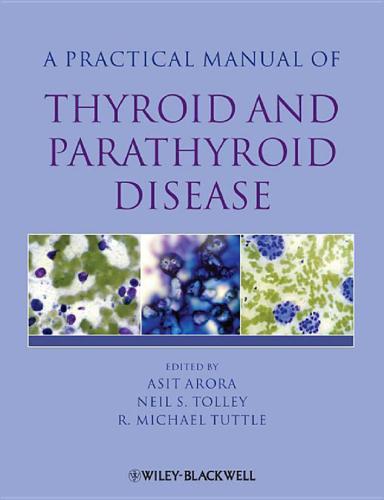
Practical Manual of Thyroid and Parathyroid Disease
by
Asit Arora
,
Neil Tolley
and
R. Michael Tuttle
Published 2 Jan 2009
The development and application of imatinib. Expert Opin Drug Saf 2005;4:183–91. 189. Carlomagno F, et al. ZD6474, an orally available inhibitor of KDR tyrosine kinase activity, efficiently blocks oncogenic RET kinases. Cancer Res 2002;62:7284–90. 190. Vidal M, et al. ZD6474 suppresses oncogenic RET isoforms in a Drosophila model for type 2 multiple endocrine neoplasia syndromes and papillary thyroid carcinoma. Cancer Res 2005;65:3538–41. 191. Hoffmann S, et al. Targeting the EGF/VEGF-R system by tyrosine-kinase inhibitors—a novel antiproliferative/ antiangiogenic strategy in thyroid cancer. Langenbecks Arch Surg 2006;391:589–96. 192.

Behave: The Biology of Humans at Our Best and Worst
by
Robert M. Sapolsky
Published 1 May 2017
Pan et al., “Deep Surveying of Alternative Splicing Complexity in the Human Transcriptome by High-Throughput Sequencing,” Nat Gen, 40 (2008): 1413. 11. A. Muotri et al., “Somatic Mosaicism in Neuronal Precursor Cells Mediated by L1 Retrotransposition,” Nat 435 (2005): 903; P. Perrat et al., “Transposition-Driven Genomic Heterogeneity in the Drosophila Brain,” Sci 340 (2013): 91; G. Vogel, “Do Jumping Genes Spawn Diversity?” Sci 332 (2011): 300; J. Baillie et al., “Somatic Retrotransposition Alters the Genetic Landscape of the Human Brain,” Nat 479 (2011): 534. 12. A. Eldar and M. Elowitz, “Functional Roles for Noise in Genetic Circuits,” Nat 467 (2010): 167; C.
…
Alvarez et al., “The Role of Inbreeding in the Extinction of a Europrean Royal Dynasty,” PLoS ONE 4 (2009): e5174. 22. Theoretical model: B. Bengtsson, “Avoiding Inbreeding: At What Cost?” J Theoretical Biol 73 (1978): 439. 23. Insects: S. Robinson et al., “Preference for Related Mates in the Fruit Fly, Drosophila melanogaster,” Animal Behav 84 (2012): 1169. Lizards: M. Richard et al., “Optimal Level of Inbreeding in the Common Lizard,” Proc Royal Soc of London B 276 (2009): 2779. Fish, and related parents invested more in rearing: T. Thünken et al., “Active Inbreeding in a Cichlid Fish and Its Adaptive Significance,” Curr Biol 17 (2007): 225.
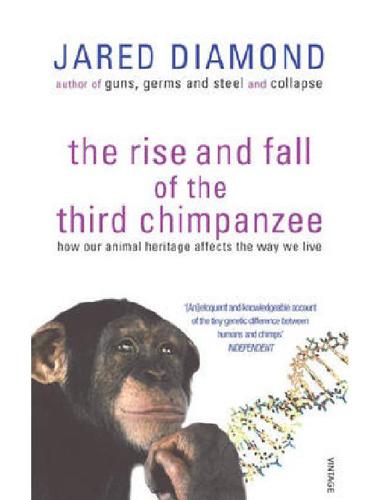
The Rise and Fall of the Third Chimpanzee
by
Jared Diamond
Published 2 Jan 1991
Beutler, 'Planned obsolescence in humans and in other biosystems', Perspectives in Biology and Medicine 29, pp. 175-79 (1986); R.J. Goss, 'Why mammals don't regenerate—or do they? , News in Physiological Sciences 2, 112-15 (1987); L.D. Mueller, 'Evolution of accelerated senescence in laboratory populations of Drosophila, Proceedings of the National Academy of Sciences 84, pp. 1974-77 (1987); and T.B. Kirkwood, The nature and causes of ageing', pp. 193–206 in a book edited by D. Evered and J. Whelan, Research and the Ageing Population (John Wiley, Chichester, 1988). Two books exemplifying the physiological (proximate-cause) approach to aging are by R.L.

Rainbows End
by
Vernor Vinge
Published 1 May 2006
After all, she wasn’t desperate for his help. “Ah, Miri, you read but you don’t understand. If you had access just now to the wider net — and a few hundred hours of research — perhaps you’d understand that molecular biology depends more on data depth and analysis than it does on the particular class of organism. In his Drosophila melanogaster alfredü — is that what you call them, Alfred? — we have the metabolic pathways that are the basis for all animal cognition.” Minus the editorial comments, this did look like some of the pdf. They rounded a corner and saw the source of the sounds. ” Viola, Alfred’s three hundred thousand fruit flies, now being folded into convenient shipping cartridges.”
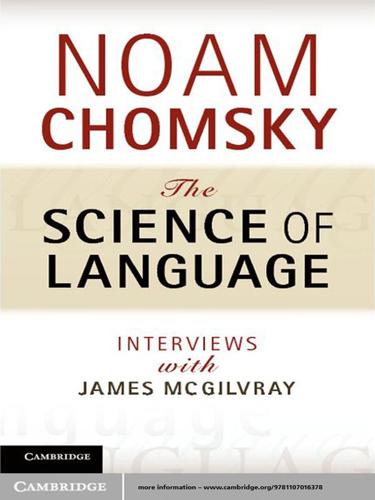
The Science of Language
by
Noam Chomsky
Published 24 Feb 2012
Waddington invented the term “chreodes” for these. Developmental biologists have not adopted his term, nor his related term “homeorhesis,” for biologically expressed processes that constitute such pathways of development. A lot has happened since Waddington's early (1940, 1942) work on canalization with drosophila wings and a ‘heat stress’ gene; the field draws a lot of attention now, and research continues. For a fairly recent review of developments and issues, see Salazar-Ciudad (2007). The contemporary research program known as “evo-devo” indicates clearly that development and growth are due to more than the genetic instructions contained in what are called “master” genes, the genes that specify that a creature will have, say, vision, or that some pattern will appear on butterfly wings, etc.
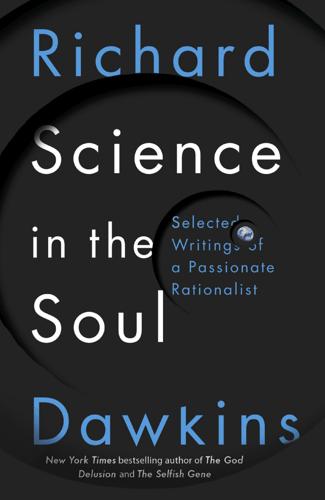
Science in the Soul: Selected Writings of a Passionate Rationalist
by
Richard Dawkins
Published 15 Mar 2017
Why does this not make it a 747 saltation, and therefore rule it out? We know that single mutations can orchestrate changes in growth rates of many diverse parts of organs, and, when we think about developmental processes, it is not in the least surprising that this should be so. When a single mutation causes a Drosophila to grow a leg where an antenna ought to be, the leg grows in all its formidable complexity. But this is not mysterious or surprising, not a 747 saltation, because the organization of a leg is already present in the body before the mutation. Wherever, as in embryogenesis, we have a hierarchically branching tree of causal relationships, a small alteration at a senior node of the tree can have large and complex ramified effects on the tips of the twigs.

The Hype Machine: How Social Media Disrupts Our Elections, Our Economy, and Our Health--And How We Must Adapt
by
Sinan Aral
Published 14 Sep 2020
Isolation is aversive and unsafe for social species: John T. Cacioppo, Stephanie Cacioppo, and Dorret I. Boomsma, “Evolutionary Mechanisms for Loneliness,” Cognition and Emotion 28, no. 1 (2014): 3–21. It decreases the life span of fruit flies: Hongyu Ruan and Chun-Fang Wu, “Social Interaction–Mediated Lifespan Extension of Drosophila Cu/Zn Superoxide Dismutase Mutants,” Proceedings of the National Academy of Sciences 105, no. 21 (2008): 7506–10. It promotes obesity and Type II diabetes: Katsunori Nonogaki, Kana Nozue, and Yoshitomo Oka, “Social Isolation Affects the Development of Obesity and Type 2 Diabetes in Mice,” Endocrinology 148, no. 10 (2007): 4658–66.
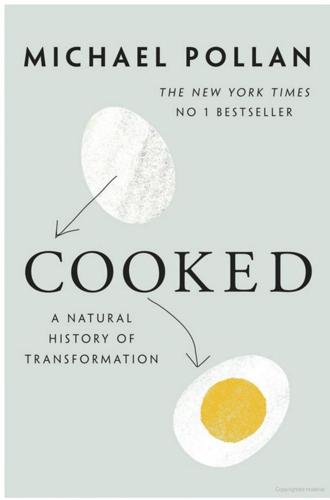
Cooked: A Natural History of Transformation
by
Michael Pollan
Published 22 Apr 2013
And they bare [it].When the ruler of the feast had tasted the water that was made wine, and knew not whence it was: (but the servants which drew the water knew) the governor of the feast called the bridegroom, And saith unto him, Every man at the beginning doth set forth good wine; and when men have well drunk, then that which is worse: [but] thou hast kept the good wine until now. “This beginning of miracles did Jesus in Cana of Galilee, and manifested forth his glory; and his disciples believed on him.” (John 2:7–11) * One species of fruit fly—Drosophila melanogaster—consumes alcohol as a way to medicate itself; the alcohol poisons a tiny parasitic wasp in its gut that otherwise would kill the fly. The alcohol kills the wasp by causing its internal organs to shoot out of its anus. Milan, Neil F., et al., “Alcohol Consumption as Self-Medication Against Blood-Borne Parasites in the Fruit Fly,” Current Biology 22 No. 6 (2012): 488–93

The Precipice: Existential Risk and the Future of Humanity
by
Toby Ord
Published 24 Mar 2020
(2011). “Rescuing Conservatism: A Defense of Existing Value,” in Reasons and Recognition: Essays on the Philosophy of T. M. Scanlon (pp. 203–26). Oxford University Press. Cohen, M. N. (1989). Health and the Rise of Civilization. Yale University Press. Coles, L. S. (1994). “Computer Chess: The Drosophila of AI.” AI Expert, 9(4). Collingridge, D. (1982). The Social Control of Technology. St. Martin’s Press. Collins, G. S., Melosh, H. J., and Marcus, R. A. (2005). “Earth Impact Effects Program: A Web-Based Computer Program for Calculating the Regional Environmental Consequences of a Meteoroid Impact on Earth.”

Superintelligence: Paths, Dangers, Strategies
by
Nick Bostrom
Published 3 Jun 2014
“Long-Term In Vivo Imaging of Experience-Dependent Synaptic Plasticity in Adult Cortex.” Nature 420 (6917): 788–94. Traub, Wesley A. 2012. “Terrestrial, Habitable-Zone Exoplanet Frequency from Kepler.” Astrophysical Journal 745 (1): 1–10. Truman, James W., Taylor, Barbara J., and Awad, Timothy A. 1993. “Formation of the Adult Nervous System.” In The Development of Drosophila Melanogaster, edited by Michael Bate and Alfonso Martinez Arias. Plainview, NY: Cold Spring Harbor Laboratory. Tuomi, Ilkka. 2002. “The Lives and the Death of Moore’s Law.” First Monday 7 (11). Turing, A. M. 1950. “Computing Machinery and Intelligence.” Mind 59 (236): 433–60. Turkheimer, Eric, Haley, Andreana, Waldron, Mary, D’Onofrio, Brian, and Gottesman, Irving I. 2003.
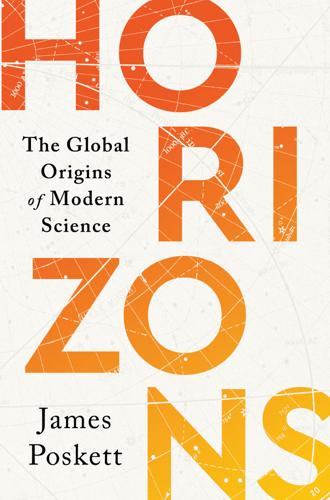
Horizons: The Global Origins of Modern Science
by
James Poskett
Published 22 Mar 2022
Swaminathan, 45, Hurt, The Green Revolution in the Global South, 46, and ‘Dilbagh Athwal, Geneticist and “Father of the Wheat Revolution” – Obituary’, The Telegraph, accessed 2 September 2020, https://www.telegraph.co.uk/obituaries/2017/05/22/dilbagh-athwal-geneticist-father-wheat-revolution-obituary/. 37Arnold, ‘Nehruvian Science’, 362 and 368, Sen, ‘Four Decades of Biochemistry’, 175, Sigrid Schmalzer, Red Revolution, Green Revolution: Scientific Farming in Socialist China (Chicago: University of Chicago Press, 2016), 5. 38Jawaharlal Nehru, Jawaharlal Nehru on Science and Society: A Collection of His Writings and Speeches (New Delhi: Nehru Memorial Museum and Library, 1988), 137–8, and Robert Anderson, Nucleus and Nation: Scientists, International Networks, and Power in India (Chicago: University of Chicago Press, 2010), 4 and 237. 39Indira Chowdhury, Growing the Tree of Science: Homi Bhabha and the Tata Institute of Fundamental Research (New Delhi: Oxford University Press, 2016), 175, Krishnaswamy VijayRaghavan, ‘Obaid Siddiqi: Celebrating His Life in Science and the Cultural Transmission of Its Values’, Journal of Neurogenetics 26 (2012), Zinnia Ray Chaudhuri, ‘Her Father’s Voice: A Photographer Pays Tribute to Her Celebrated Scientist-Father’, Scroll.in, accessed 5 May 2020, https://scroll.in/roving/802600/her-fathers-voice-a-photographer-pays-tribute-to-her-celebrated-scientist-father, and ‘India Mourns Loss of “Aristocratic” & Gutsy Molecular Biology Guru’, Nature India, accessed 4 May 2020, https://www.natureasia.com/en/nindia/article/10.1038/nindia.2013.102. 40‘India Mourns’, VijayRaghavan, ‘Obaid Siddiqi’, 257–9, and Chowdhury, Growing the Tree of Science, 175. 41VijayRaghavan, ‘Obaid Siddiqi’, 257–9, Chowdhury, Growing the Tree of Science, 175, and Alan Garen and Obaid Siddiqi, ‘Suppression of Mutations in the Alkaline Phosphatase Structural Cistron of E. coli’, Proceedings of the National Academy of Sciences of the United States of America 48 (1962). 42Chowdhury, Growing the Tree of Science, 175–8. 43Chowdhury, Growing the Tree of Science, 181–2, VijayRaghavan, ‘Obaid Siddiqi’, 259, and Obaid Siddiqi and Seymour Benzer, ‘Neurophysiological Defects in Temperature-Sensitive Paralytic Mutants of Drosophila Melanogaster’, Proceedings of the National Academy of Sciences of the United States of America 73 (1976). 44Chowdhury, Growing the Tree of Science 183, Krishnaswamy VijayRaghavan and Michael Bate, ‘Veronica Rodrigues (1953–2010)’, Science 330 (2010), Namrata Gupta and A. K. Sharma, ‘Triple Burden on Women Academic Scientists’, in Women and Science in India: A Reader, ed.
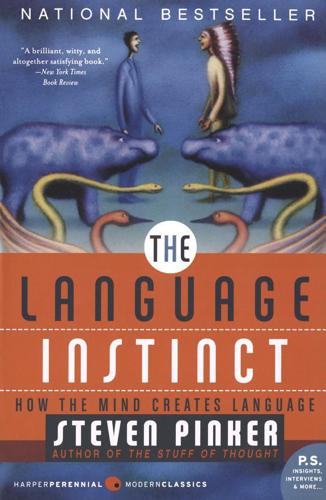
The Language Instinct: How the Mind Creates Language
by
Steven Pinker
Published 1 Jan 1994
This rule is the simplest, most stripped-down example of anything we would want to call a rule of grammar. In my laboratory we use it as an easily studied instance of mental grammar, allowing us to document in great detail the psychology of linguistic rules from infancy to old age in both normal and neurologically impaired people, in much the same way that biologists focus on the fruit fly Drosophila to study the machinery of genes. Though simple, the rule that glues an inflection to a stem is a surprisingly powerful computational operation. That is because it recognizes an abstract mental symbol, like “noun stem,” instead of being associated with a particular list of words or a particular list of sounds or a particular list of meanings.
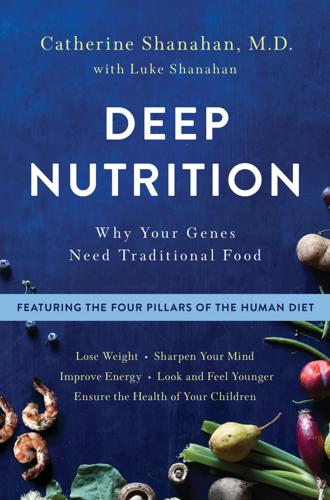
Deep Nutrition: Why Your Genes Need Traditional Food
by
Catherine Shanahan M. D.
Published 2 Jan 2017
Mutational specificity of γ-radiation-induced g–thymine and thymine–guanine intrastrand cross-links in mammalian cells and translesion synthesis past the guanine–thymine lesion by human DNA polymerase, Biochemistry, August 5, 2008; 47(31): 8070–8079. 421. Rates of spontaneous mutation, Drake JW, Charlesworth B, Charlesworth D, Crow JF, Genetics, April 1998, 148 (4): 1667–86. 422. Mutagenic/recombinogenic effects of four lipid peroxidation products in Drosophila. Food Chem Toxicol, March 2013, 53:ch221-7, doi 10.1016/j.fct.2012.11.0,3, epub December 2012. 423. Dietary oxidized n-3 PUFA induce oxidative stress and inflammation: role of intestinal absorption of 4-HHE and reactivity in intestinal cells, J Lipid Res, October 2012, 53(10):2069-80, doi 10.1194/jlr.M026179, epub August 2012. 424.
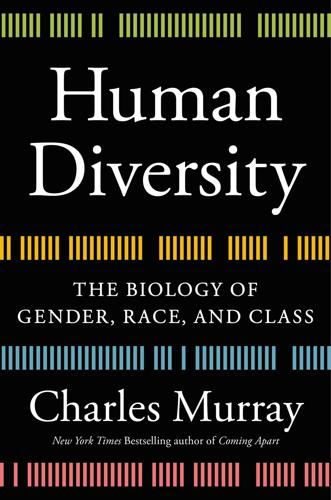
Human Diversity: The Biology of Gender, Race, and Class
by
Charles Murray
Published 28 Jan 2020
“Breastfeeding, Maternal Education and Cognitive Function: A Prospective Study in Twins.” Behavior Genetics 39: 616–22. Bartz, J. A., J. Zaki, N. Bolger et al. 2011. “Social Effects of Oxytocin in Humans: Context and Person Matter.” Trends in Cognitive Sciences 15 (7): 301–9. Bateman, A. J. 1948. “Intra-sexual Selection in Drosophila.” Heredity 2: 349. Bates, Timothy C., Narelle K. Hansell, Nicholas G. Martin et al. 2016. “When Does Socioeconomic Status (SES) Moderate the Heritability of IQ? No Evidence for G × SES Interaction for IQ in a Representative Sample of 1176 Australian Adolescent Twin Pairs.” Intelligence 56: 10–15.

Good Calories, Bad Calories: Challenging the Conventional Wisdom on Diet, Weight Control, and Disease
by
Gary Taubes
Published 25 Sep 2007
“Hypertension.” In Kahn and Weir, eds., 1994, 817–35. Cioffi, L. A., W. P. James, and T. B. Van Itallie, eds. 1981. The Body Weight Regulatory System: Normal and Disturbed Mechanisms. New York: Raven Press. Clancy, D. J., D. Gems, L. G. Harshman, et al. 2001. “Extension of Life-Span by Loss of CHICO, a Drosophila Insulin Receptor Substrate Protein.” Science. April 6; 292(5514):104–6. Clarke, H. T. 1941. “Rudolf Schoenheimer.” Science. Dec. 12; 94(2450):553–54. Cleave, T. L. 1975. The Saccharine Disease: The Master Disease of Our Time. New Canaan, Conn.: Keats Publishing. ———. 1962. Peptic Ulcer. Bristol: John Wright & Sons. ———. 1956.

Hawaii
by
Jeff Campbell
Published 4 Nov 2009
These creepy-crawlies evolved from a mere 350 to 400 colonizing species; on average, every bug that was tossed into the jet stream and crash-landed successfully became two dozen new bugs uniquely adapted to various niches in Hawaii’s diverse island ecosystems. What puzzles scientists, though, is that there is no average rate. Some species hardly evolved at all, while others are off-the-charts: Drosophila flies evolved into over 600 species; Hyposmocoma moths evolved into over 350 species. Eight other insects account for over 100 species, some particular to only an acre or two. One of the most common adaptations was losing wings, or flightlessness. Most of Hawaii’s insects arrived by air – mainly beetles, small flies, wasps, moths, bugs and leafhoppers.
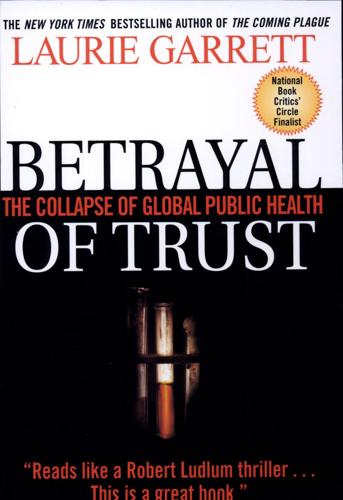
Betrayal of Trust: The Collapse of Global Public Health
by
Laurie Garrett
Published 15 Feb 2000
Cancer death rates first began a downward dip in 1992, largely due to lower tobacco smoking rates in the United States and associated declines in lung cancer deaths. In 1998 about half a million Americans died of cancers, primarily of the lung (160,000); colon (55,000); breast (44,000); and prostate (39,000). 59. Service, R. F. “Borrowing from biology to power the petite.” Science 283 (1999): 27–28. 60. See, for example, Dickson, D. “Ventner’s Drosophila ‘success’ set to boost human genome efforts.” Nature 401 (1999): 729; “Genome prospecting.” Special issue. Science 286 (1999): 443–31; Normille, D., and Pennisi, E. “Team wrapping up sequence of first human chromosome.” Science 285 (1999): 2038–39; “Special issue: The future of medicine.” Time (January 11, 1999); and Tang, Y.

Rationality: From AI to Zombies
by
Eliezer Yudkowsky
Published 11 Mar 2015
In which case, if mice were to evolve the ability to fly and migrate for the winter, they would probably form a single reproductive population, and would evolve to extinction as the segregation-distorter evolved to fixation. Around 50% of the total genome of maize consists of transposons, DNA elements whose primary function is to copy themselves into other locations of DNA. A class of transposons called “P elements” seem to have first appeared in Drosophila only in the middle of the twentieth century, and spread to every population of the species within 50 years. The “Alu sequence” in humans, a 300-base transposon, is repeated between 300,000 and a million times in the human genome. This may not extinguish a species, but it doesn’t help it; transposons cause more mutations which are as always mostly harmful, decrease the effective copying fidelity of DNA.

Artificial Intelligence: A Modern Approach
by
Stuart Russell
and
Peter Norvig
Published 14 Jul 2019
Biological Cybernetics, 36, 193–202. Fukushima, K. and Miyake, S. (1982). Neocognitron: A self-organizing neural network model for a mechanism of visual pattern recognition. In Competition and cooperation in neural nets. Springer. Fuller, S. B., Straw, A. D., Peek, M. Y., Murray, R. M., and Dickinson, M. H. (2014). Flying Drosophila stabilize their vision-based velocity controller by sensing wind with their antennae. Proc. National Academy of Sciences of the United States of America, 111 13, E1182–91. Fung, C., Yoon, C. J. M., and Beschastnikh, I. (2018). Mitigating sybils in federated learning poisoning. arXiv:1808.04866.